The Sniffle
Friday, February 29, 2008
My daughter Hilary as a girl used to run around the house with Rosemary's slips on her head. Curiously her daughter Rebecca has been known to do it as seen here. When I was looking at it today suddenly I had this memory for a poem that fit it. I rushed to the Selected Poems of Ogden Nash - I Wouldn't Have Missed It and furiously turned the pages until I found:
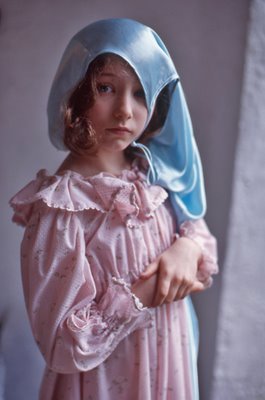
THE SNIFFLE
In spite of her sniffle,
Isabel's chiffle.
Some girls with a sniffle
Would be weepy and tiffle;
They would look awful,
Like a rained-on-waffle,
But Isabel's chiffle
In spite of her sniffle.
Her nose is more red
With a cold in her head,
But then to be sure,
Her eyes are bluer.
Some girls with a snuffle,
Their tempers are uffle,
But when Isabel's snivelly
She's snivelly civilly,
And when she is snuffly
She's perfectly luffly.
Maurice Depas & That Leap Year Shave
But then while looking for The Sniffle I found
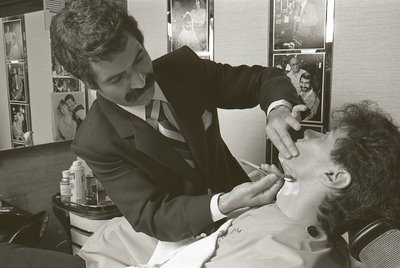
AND THREE HUNDRED AND SIXTY-SIX IN LEAP YEAR
Some people shave before bathing.
And about people who bathe before shaving they are scathing.
While those who bathe before shaving,
Well, they imply that those who shave before bathing are misbehaving.
Suppose you shave before bathing, well the advantage is that you don't
have to make a special job of washing the lather afterwards,it
just floats off with the rest of your accumulations in the tub.
But the disadvantage is that before bathing you skin is hard and dry
and your beard confronts the razor like a grizzly bear defending its
cub.
Well then, suppose you bathe before shaving, well the advantage is that
after bathing your skin is soft and moist and your beard positively
begs for the blade.
But the disadvantage is that to get the lather off you have to wash your
face all over again at the basin almost immediately after washing
in the tub, which is a duplication of effort that leaves me spotless
but dismayed.
The referee reports, gentlemen, that Fate has loaded the dice,
Since your only choice is between walking around all day with a sore
chin or washing your face twice.
So I will now go and get a shave from a smug man in a crisp white coat,
And I will disrupt his smugness by asking him about his private life, does
he bathe before shaving or shave before bathing, and then I will die
either of laughing or of a clean cut throat.
Selected Poems of Ogden Nash - I Wouldn't Have Missed It
I photographed Maurice Depas (Maurice & The Cliches) sometime in the late 70s getting a perfect shave in the basement of the Hotel Vancouver.
It is patently evident that if one takes a bath first then the face becomes soft and supple and ready for that shave. That's what I do. The above poem appeared in the New Yorker on August 29, 1942. Nineteen forty two was not a leap year.
Bombay Black, Kalimán & The Hindoos
Thursday, February 28, 2008
A Hindoo is a Hindoo and a brother to the man who knows his
vernacular. And a French-man is French because he speaks his own
language.
Rudyard Kipling
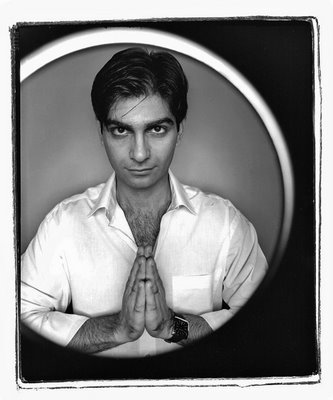
As a boy in Buenos Aires the absolute exotic was India, not China & Japan. The only Chinese people I had ever seen were a couple of female math wizards in my class at the American School. I had spotted one Japanese man who was a florist/gardener. His name was Matsumoto. I had never seen a Hindu. All Hindus wore turbans in my imagination or lay on nail beds as seen on Ripley's.
I wasn't prepared for the day when my father brought two strange gentlemen for dinner. My father besides being a journalist (the Buenos Aires Herald) was a freelance translator for the Indian Embassy. He had invited a couple of the embassy officers for homemade curry. Only my father would do something like that. The two gentleman arrived in a Hillman Minx. For weeks my neighbourhood friends questioned me about the strange dark men and their just as strange small car.
I had heard my mother and grandmother talk about the bombays (rhymes with whys)of Manila. People from the Indian subcontinent were called that in the Philippines much in the same way as they may be called East Indian here in Vancouver. I only later found out why Indians were bombays and not Hindus. It seems that hindu with a t at the end is an extremely foul word in Tagalog.
The idea that all Hindus wore turbans (all those Hollywood movies with Bengal Lancers, and Kim with Errol Flynn) was further reinforced for me in Mexico when the legendary magician/hero Kalimán appeared in comic books.

He never killed anybody but would use a blowpipe with a tranquilizer to subdue his enemies.
It wasn't until I came to Vancouver, saw Gandhi and a Passage to India that I found out about partition and that only Sikhs wore turbans. But Bombay and India, nevertheless have remained on the extreme of exotic for me.
When Anosh Irani (above, left) came to my studio in 2002 for a Straight photograph for an article on his new and first play The Matka King it was like having Kalimán in my studio minus the white turban with the jewel in the middle. The play, The Matka King I saw with my eldest daugther Ale. We were both charmed. It was a fairy story for adults.
Bombay Black which I saw with Rosemary last night is another exotic fairy story for adults. Everything that happens is unexpected. It reminds me of Argentine tango companies being advertised in Vancouver as "Direct from Buenos Aires" as if a stopover in Houston would affect their authenticity. Bombay Black felt "direct" perhaps by the fact that a lot of the language used could be deemed anochronistic. It is a modern play about life in India now. It's the shits and other words like it and my suspicion that Padma (Deen Aziz) just might own a cell phone that gave the play that air of "direct from Bombay".
A murder may happen in this play (and I will not reveal if it does). The solution to getting rid of the body is in itself so surprising that it is worth the price of admission!
Our seats were in the middle of the middle (very Canadian) and I was able to see enough of Apsara (Anita Majumdar) in the little that she wore in the first act (when she danced!), that I can guarantee had I brought my usual binoculars I would have easily turned into a a cauliflower, a Brussels sprout or perhaps a stick of celery. For Majumdar has the power to turn all men into vegetables. Kalimán would have known that.
I would like to point out that this fine play and many others, as well as dance, the visual arts, film, opera, music, circus (yes!) and other cultural activities are part of the Vancouver 2010 Cultural Olympiad. These events are all listed in a brochure available, as mine was, at the theatre and probably in other cultural venues of our city.

It was only last week that Robert Kerr, the Program Director for the Cultural Olympiad came to my studio. I was expecting a man in a suit. His leather jacket and striped shirt were as refreshingly surprising as the contents of the brochure.

Bombay Black is presented by the Arts Club Theatre Company at the Granville Island Stage from February 21 to March 15, 2008
William F. Buckley & Eisenhower In The Shower
Wednesday, February 27, 2008
I am a man of fixed and unbending principles, the first of which is to be flexible at all times.
Senator Everett McKinley Dirksen

Today I read in the NY Times of the death of William F. Buckley. Of Buckley I have written at least three times, here, here and here. But I have something small to add and that is about an ambivalent concern I have always had for admiring conservatives while being proud of not being one. It all started with a lifelong admiration for the humour and the oratory of the Republican US Senator Everett Dirksen in the late 50s and 60s when I read Time Magazine without missing one week. I later found a new conservative champion in the no nonsense speaches of Barry Goldwater. He had me in his pocket when I found out that he not only was a fighter jet pilot but a sensitive photographer of the native peoples of his home state of Arizona. My mother, a lifelong liberal, could not understand my abandoning the liberal field. After all, I had championed allegiance to Adlai Stevenson in the playground of the American School in Buenos Aires during his campaign for presidency in 1952 when I was 10. I distinctly remember screaming, " Eisenhower to the shower!"
My only conclusion is that I have admired some politicians (without concern for their political stance) because of their command of their language either in their speaches or in their writing. Anybody who could write nautical books as William F. Buckley did could do no real wrong for me. And then there was that spy novel of his: Spytime - The Undoing of James Jesus Angleton. It has been one of my favourites.
Alice, Beth, American Flag Socks & A Carte de Visite Cat
Tuesday, February 26, 2008
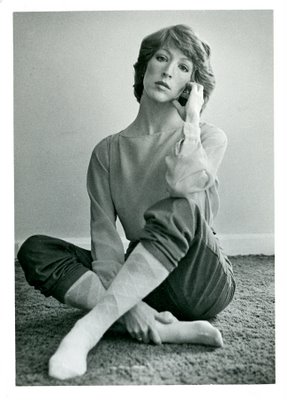
I have written here before how with web communications I am tying the loose ends of my life. I am able, almost all of the time, to answer successfully to myself, "I wonder what happened to so and so? What became of him or her?"
At one time you lived in a neighbourhood or barrio. When you moved in you planted small fruit trees and perhaps an oak sapling. Then time, family stability and the fact most of us used to stay where we were born enabled us to watch the trees grow.
I find it amazing as I look out of my living room window, beyond the top of this monitor I am writing on, to see the Ginkgo biloba soar over our garage. It almost seems yesterday that we planted it as a sapling. We moved in, in 1986 and the tree must have gone into the ground around 1990. Time has passed and the trees that have survived and the trees that have died in our garden are reminders of how time is inexorable in its march forward. There is a little brass cat in our entrance hall that reminds me of the distant past and a not so distant one.
It was around 1972 that I was teaching Spanish at the Universidad Iberoamericana a Jesuit university in Mexico City. I remember the first day of that year's class which were mostly college students from the US. One of my students was a petite long-haired young girl with American Flag socks. She needled me with questions and never accepted anything as fact. I immediately took an interest in her. Thanks to her the class was a spirited class. Halfway through the term I would organize a weekend trip to Guanajuato, in the State of Guanajuato. We would rent a couple of VW beetles and with our own VW we would go as a caravan. Here you see the class outside the Iglesia de la Valenciana.

In the front row second from the left you can spot my wife Rosemary and our eldest daughter Ale. To her left you can spot Beth the girl who liked to wear American Flag socks. She hailed from Dubuque, Iowa and insisted it was not at all like Podunk. I gave her the nickname of Alice as even though she was childlike in appearance she acted like the intelligent adult Alice Liddell had been as a child.

We corresponded for many years and somehow never lost touch. I found out about her love for a Colombian neurologist. Beth went to marry him in Colombia and they then returned to establish a practice in Florida. Meanwhile Beth had shifted her interest in ballet to Tai Chi and became an instructor. She had two sons.
Perhaps some 13 years ago she came to Vancouver with her husband who was attending a conference of neurologists. When I saw her she seemed to be physically very fit and she matter of factly told me she could demolish me in a few swoops and kicks. I did not try to prove her right. She visited us at the Thursday Railway Club get together with my friends and brought me a gift.
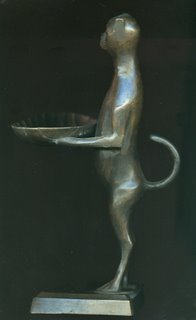
It was a brass cat used as a repository for cartes de visite. It has been in our front hall all these years and it has reminded me that I had lost touch with Beth and I had no idea what had happened to her.
Yesterday afternoon I found her. Beth had left an on-line presence by having thanked a real estate agent for services rendered. That was enough for me and I then Skyped her!
Beth has grown up and she is now Elizabeth. She lives alone as her relationship faltered. She is a virtual nun. My only conclusion is that the men in her neighbourhood must all be blind.
I look forward to getting further news from Elizabeth and the hopes that she will lose her habit (the nunnery one) and get a life. She deserves one.
Lauren Elizabeth Stewart - The Wonder of Diversity
Monday, February 25, 2008

When our first daughter Ale was born I felt the excitement of that first child. When Hilary was born it seemed to be different. But because Hilary was clingy and Ale was independent Rosemary and I showered Hilary with extra attention. In many ways our older Ale resented all the attention on Hilary. I have discovered that one has to be, where possible, as impartial as one can in giving attention to one's children.
A friend from my old days at Wreck Beach, Maanus Pikker recently came for our family Saturday afternoon dinner. He told me that watching Hilary's daughters, Rebecca and Lauren was like experiencing Ale and Hilary all over again. Lauren is blonde and Rebecca is a brunette. Maanus said that they even resembled my respective daughters.
I have always maintained that new-born babies are "plants" that have a personality that only a mother can discern. For me it has been hard to photograph Lauren until now. She is now 5. Somewhere around age 4 a child (in my experience) is finally able to understand the command, "Look in here in the lens of my camera." Since age 4 Rebecca has staired at my lens with narry a smile. At first there were protests from her family, "Why don't you photograph her smiling?" They have given up and are now used to the serious look.
At about age 3 Lauren had an intermittent problem of suddenly blinking her eyes randomly or when looking at the camera. We were told by her doctor to ignore it and not make an issue. Since then the problem has disappeared and Lauren will stare at me from her side of the dining room table.
Lauren used to scream about not liking her food and while she is still particular the screams and the crying have dissipated. When I take Rebecca to some dance function Lauren asks, "Am I going?" I have noticed that on Saturdays she suggests to me that she and I might go for a walk around the block. Lauren will sit on my lap without being asked.

Yes, I am being charmed my my other granddaughter and as Lauren stares at my camera I think that I have a new subject that will keep me occupied for time to come. And I do believe that with her precise and persnickety ways I may have finally found someone to take over in my profession of photography. But best of all I have learned that as much as I love Rebecca for the way she is I cannot expect anybody else to be like her. Without having to compare, I can simply accept, marvel and enjoy the diversity.
Sunday, February 24, 2008
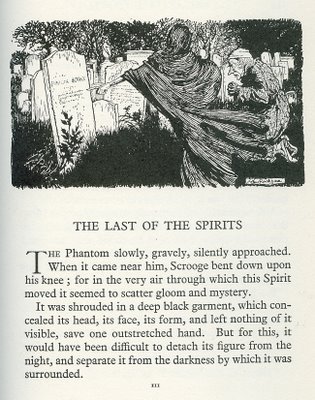
'I am in the presence of the Ghost of Christmas Yet to Come?'said Scrooge.
The spirit answered not, but pointed onward with its hand.
'You are about to show me the shadows of the things that have not happened, but will happen in the time before us, 'Scrooge pursued, 'Is that so, Spirit?'
The keynote speaker of the Vancouver blogging conference Northern Voice 2008 was Matt Mullenweg who pioneered a blogging program with great educational possibilities (it is used, among other things, in universities by professors and students so that they can link to each other) called WordPress. This program is very popular with bloggers. In my case this blog is not generated by WordPress but by a proprietary program of Blogger.
The articulate 23-year old showed us a slide of himself taken in 2002, with the White House in the background. The teenager, in glasses was unassuming. I looked at it closely and immediately thought of Charles's Dickens's A Christmas Carol. The young man in the photograph represented our present. Had Scrooge talked with him then he would have been the Spirit Of Times To Come. Mullenweg has modified our world to what it is. Bloggers are changing news, periodicals. The Wikipedia will soon make other encyclopedias as obsolete as the spelling of it (encyclopaedia). WordPress was one of the programs that pushed our world to where it is today. As I listened to Mullenweg talk about things to come I again saw him as the Spirit Of Things To Come. This 23-year-old young man, this clean cut young man with the smile, the young man who believes that all things are possible and positive (the idealism of youth) convinced me that our future is not bleak if people like him manage our world, behind the scenes, with computer programs that few of us understand.
It was sheer fun to watch Alan Levine tell a story in 50 possible ways (he showed us about 10) using different free Web 2.0 tricks to display them. The story of a Dalmatian that is found and then lost and then found again was hilarious in all the versions that I saw. It was neat to see that these knowledgeable geeks have a keen sense of humour and fun.
One of the buzz expressions of the conference was computer clouds. The first person to use it yesterday was Marc Canter. He had strong opinions and I agreed with most of the ones I understood. He seemed to think that we now have the power to transform capitalism into a gentler, kinder and less greedy form.
But it was Boris Mann, one of the organizers of Northern Voice who finally explained to me with panache, yellow paper and a marking pen the concept of computer clouds which if I understand well is a sort of computer power outsourcing. He confirmed the shocking news that I heard from Marc Canter that for the first time more computers are being bought by the likes of Microsoft, Google and Yahoo than by consumers like you and me.

Pity that our local media had no interest in accompanying the Spirit(s) Of Things To Come. I feel a bit smug to know that, at least, I know!

'I am in the presence of the Ghost of Christmas Yet to Come?'said Scrooge.
The spirit answered not, but pointed onward with its hand.
'You are about to show me the shadows of the things that have not happened, but will happen in the time before us, 'Scrooge pursued, 'Is that so, Spirit?'
The keynote speaker of the Vancouver blogging conference Northern Voice 2008 was Matt Mullenweg who pioneered a blogging program with great educational possibilities (it is used, among other things, in universities by professors and students so that they can link to each other) called WordPress. This program is very popular with bloggers. In my case this blog is not generated by WordPress but by a proprietary program of Blogger.
The articulate 23-year old showed us a slide of himself taken in 2002, with the White House in the background. The teenager, in glasses was unassuming. I looked at it closely and immediately thought of Charles's Dickens's A Christmas Carol. The young man in the photograph represented our present. Had Scrooge talked with him then he would have been the Spirit Of Times To Come. Mullenweg has modified our world to what it is. Bloggers are changing news, periodicals. The Wikipedia will soon make other encyclopedias as obsolete as the spelling of it (encyclopaedia). WordPress was one of the programs that pushed our world to where it is today. As I listened to Mullenweg talk about things to come I again saw him as the Spirit Of Things To Come. This 23-year-old young man, this clean cut young man with the smile, the young man who believes that all things are possible and positive (the idealism of youth) convinced me that our future is not bleak if people like him manage our world, behind the scenes, with computer programs that few of us understand.
It was sheer fun to watch Alan Levine tell a story in 50 possible ways (he showed us about 10) using different free Web 2.0 tricks to display them. The story of a Dalmatian that is found and then lost and then found again was hilarious in all the versions that I saw. It was neat to see that these knowledgeable geeks have a keen sense of humour and fun.
One of the buzz expressions of the conference was computer clouds. The first person to use it yesterday was Marc Canter. He had strong opinions and I agreed with most of the ones I understood. He seemed to think that we now have the power to transform capitalism into a gentler, kinder and less greedy form.
But it was Boris Mann, one of the organizers of Northern Voice who finally explained to me with panache, yellow paper and a marking pen the concept of computer clouds which if I understand well is a sort of computer power outsourcing. He confirmed the shocking news that I heard from Marc Canter that for the first time more computers are being bought by the likes of Microsoft, Google and Yahoo than by consumers like you and me.

Pity that our local media had no interest in accompanying the Spirit(s) Of Things To Come. I feel a bit smug to know that, at least, I know!
Saturday, February 23, 2008
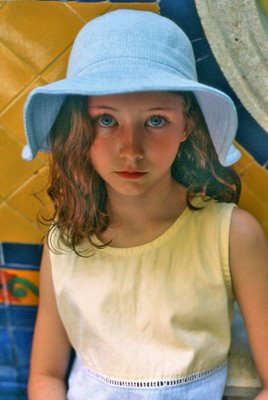
Three hundred and sixty four days ago I wrote Why do I blog? A Northern Voice Perspective. I checked what I wrote (you can see all of it below) and the only few changes that I can notice is that I replaced my venerable Epson 1640 SU with an Epson V-700. And I also note that Rebecca is getting some competition from her sister Lauren in my blogs.

Paradoxically in the middle of having great FUN at this year's Northern Voice I have strained both Friday night and tonight in finding inspiration or motive to write the blog. Perhaps writing it in the evening when Rosemary is asleep is a private and even pleasantly lonely activity. Listening to a few read their blogs (some quite personal about failed relationships) at the Tiki Party, Thursday night, put me on the other end (receiving?) of my own blog. Pressing the Publish Post box sends my day's blog into an Einsteinian ether. That's comforting. Hearing it (a blog) bounce back as I did at the Waldorf was excruciating. I wonder if I will be back to normal by Sunday night?
The little girl, my granddaughter Rebecca, who illustrated this blog a year ago (picture taken in Uruguay in 2004) is is now 10 and I include here some pictures of her wearing that same dress we bought in Punta del Este, Uruguay in 2004.

I listened with interest the motivations of people who send pictures, tips and news essays to the CBC's Your Story in the Unconference. It would seem that they seek fame through that elusive medium of being published and "not paid be damned." It is quite difficult to borrow money from the bank with photo credits. It all made me think of Rebecca and a question she asked me as we left Opera Sushi, some weeks back. The Japanese chef had said, "Goodbye Rebecca," even though we were never introduced. It was obvious that the chef had read my blog about his establishment. Rebecca asked me, "Am I famous?" I told her I didn't think so. I further added, "You have to do something with your life before you can perhaps be famous."
WHY DO I BLOG? A NORTHERN PERSPECTIVE
Saturday, February 24, 2007
1979 motto of the Vancouver alternative scene rock band The Modernettes.
Get Modern or get fucked.

year and one month ago I started this blog with complete ignorance on what a blog was. The blog was attached to a simultaneously new web page, both designed by Doug Jasinki and Chris Botting at Skunkworks Creative Group Ltd.. That Doug Jasinski is also a lawyer brought with it some extra advantages in the wording of my profile.
Without knowing that it was a primitive version of a blog/wiki I had been a member some years before of the American Hosta Society Electronic Round Robin. It was the furious flaming in the forum postings that convinced me that my new blog should be what I call a "one sided" blog.
I was unsure on what the content of my blog was to be until I noticed my attraction to Bill Richardsons's CBC Radio show Bunny Watson. Alas! This radio program has been discontinued, but my memory of the program's quirky bringing together of apparently random facts through association has been my inspiration for my blog since. It is because of my blog's randomness that I have resisted classifying it into categories.
My new blog went along for a few weeks and was somehow noticed by Tim Bray who immediately advised me on two very necessary features. One was the RSS feed and the other the individual address links to every day's postings. I asked Bray what an RSS feed was and he told me, "Don't ask me, just tell your folks to install it." Looking into other blogs also convinced me on a self-imposed structure of:
1. No ranting.
2. No politics.
3. No religion.
4. No reviews of contemporary films.
5. No nude photographs. (I broke this rule once)
6. No blogs related to the day's news events except the deaths of interesting people whose pictures I have in my files.
7. No profanity except as quotes today and here
A large chunk of my blog has to do with my relationship to my granddaughter Rebecca Stewart (now 9). Slowly her sister Lauren (4) is beginning to share blog time.
Rebecca is not the only frequent visitor of my blog. My two daughters have told me that they have been afraid to ask me questions about my past or that there simply never seemed to be the time for them. They enjoy finding about themselves through my recounting of our past as a family.
I have been a freelance writer for 15 years and being able to write for Vancouver publications has all but disappeared. The incresing trend in using handout photographs (the same ones appear in most magazines and newspapers) has been paralleled by one of "modified" press releases made to look editorial. As newpsapers find it hard to increase their ad space there are many cuts in feelance hiring. For a while I was angry and frustrated.
This pent up anger has been released in my blogs on music, theatre and dance. I preview favourite artists and shows. I write what I want in the format that I want. No editor tells me I have to cut my word count. With this pent up anger gone my spirits are up and I can seek work calmly in the difficult market of photography.
My Epson 1640 SU flatbed scanner sits to the left of my monitor. It is a friendly companion that has served me well in my blogging. It has helped me make sense and put an order in my head of my extensive 30 year-old film files. When I don't have a photograph to fit into that day's blog I often find objects in my house that magically come to life when I place them on my scanner.
My wife Rosemary was at first aprehensive on my daily disappeances to sit in front of my computer. But after several valuable sales of my photographs found by search engines in my blog, including a recent one of Jane Jacobs to the Rockefeller Foundation she sees it as almost all good. So do I.
It would seem that my horizons in the blogging world are expanding. It was only yesterday,
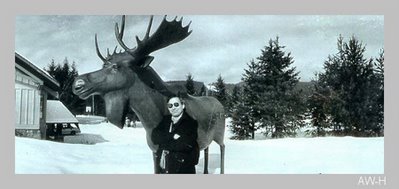
at Moosecamp that I discovered a range of stuff I was completely ignorant about. I may not understand it yet, but there it is in my head ready to find future associations. Stuff like Drupel, WordPress, Twitter and Moo Cards.
This is a repeat appearance of my blog from Friday, July 06, 2007 and in a nutshell it is what my talk with Kris Krug will be about in today's 2008 Northern Voice.

Sometime in 1985 I read A.K. Dewdney's The Planiverse, a strange novel about a two-dimensional world. Whenever I run into Dewdney Trunk Road (it seems to start and stop and meander through much of the Lower Mainland) I think of the Planiverse. Just like the inhabitants of The Planiverse would never think to look up and discover the third dimension, somehow it would be just as impossible to drive the length of Dewdney Trunk Road without getting lost, or would it?
Five years ago Rosemary and I took Rebecca (then 5) to our first vacation trip together. We went to Washington DC. We saw a few paintings at the National Gallery but I left the best for last. I took Rebecca to the special room and she stared at the 16 13/16 x 14 9/16 oil on panel and said, "Papi, she looks like the Mona Lisa. This must be a painting by da Vinci." Was I really proud of her! What is not generally known about Ginevra de' Benci is that the painting has two sides, an obverse one.
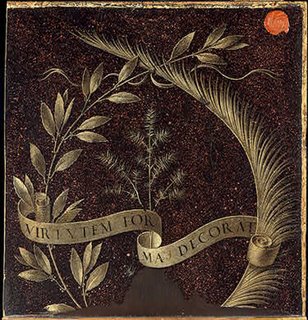
I have never tried to tell my Scottish heritage son-in-law, Bruce Stewart, my Scottish joke about the one-sided pancakes which cost less than the two-sided variety!
The "rules" of composition in photography are artificial tricks that are supposed to induce the movement of a viewer's eyes when the viewer looks at a photograph. Photographs that work will have at least one diagonal line or the horizon line will not be equidistant from top and bottom as that would create, instantaneously, two equally boring photographs. These "rules" try to overcome the limitation that a photograph compresses (supress is perhaps better here) our three dimensional reality into two.
Since so many of the professional digital cameras (DSLRs) as well as the professional film ones (SLRs) have focal plane shutters, they create photographs in which one section of the photograph (where the shutter starts) will be earlier in time than the last part of the photograph. Without going into more confusing details, few of us realize that these photographs, while supressing that third dimension, depth, do include the fourth one, time! In brief in a portrait of yourself the top of your head will be "younger" than your feet.
But I would disagree that a photograph has only two dimensions (if we eliminate time). Da Vinci's portrait at the National Gallery is a good example. A photograph, a good photograph printed on heavy art photographic paper, will have an edge and heft. Vintage photographs (printed at about the time that they were taken) by such photographers as Edward Weston or Manuel Alvarez Bravo, will be signed in pencil on the back. It might have a date and or a dealer's stamp. For me these photographs, even mine, have three dimensions. I can hold them, I can cradle them, I can tear them and fold them.
On February 24 I gave a little talk at the Northern Voice Blogging Conference at UBC. As I spoke I had that day's blog projected behind me. It featured one of my favourite photographs of Rebecca. I had also brought a hard copy (a very large, beautifully framed light jet print) and had placed it behind me. After my talk a woman (there were perhaps a couple of hundred people in the room) came up to me and said, "I don't understand why you brought that (pointing at the framed photograph), after all you had it projected behind you."
That left me shocked and speechless and I have given it much thought all these months. I have come to the conclusion that our visual world (the world of pictures we look at) is in a transition from a two (really three) dimensional world to one of a true two dimensions as seen on a monitor or flat screened TV. Not only is that happening very quickly but it is also a transition from the static layout of a photo album, a magazine or a picture book to one of images that scroll in a rapid sequence.
It would seem that the cutting edge world of web design is being forced to incorporate video. One image is not enough. So we have flash and Flash and other named versions of Flash and flash. I would argue that just as Cinemascope could not in the end compete with the ease of flicking on a TV set our web as we know it will be doomed (will it?) if it attempts to imitate TV.
At my age (64) I must attempt to be objective and not denigrate this transition. I might like to hold a photograph that might even smell of fixer (and thus not be properly washed) but that does not mean that the two-dimensional images with all that contrast and vivid colour of a computer monitor are to be deemed inferior.
Until those monitor images (in those strict two dimensions) incorporate a true third of depth (as in 3D) I will personally enjoy the heft, smell, feel and that other side of a paper photograph!
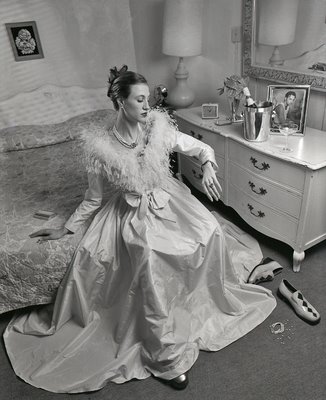
At age 65 I am late into appreciating dance. I saw the Royal Winnipeg Ballet's Evelyn Hart in 1995 and I was smitten by her and with dance. At first it was ballet. Then I expanded my taste to modern ballet. From there I progressed further into modern dance, Butoh and contact improvisational with the wonderful Susan Elliott. But I will usually pass at watching tap dancing. I may be allergic to top hats and canes.
Through my 13 years of seeing dance of which the last five I have been often occompanied by Rebecca who is now 10. Lauren, 5, has seen her fair share the last year and a half.
There are dancers of he modern kind like Alison Denham, Crystal Pite, Emily Molnar and Cori Caulfield. But there are very few that I would define as ballerinas. A ballerina for me has to be graceful but also haughty, almost patrician. And the only dancer that has ever fit that category for me in Vancouver has been Adrea Hodge whom I first saw around 1995 when she danced with Ballet BC. It was perhaps because of her and others like Simone Orlando that Rebecca finally started taking dance classes at Arts Umbrella when she was 5.
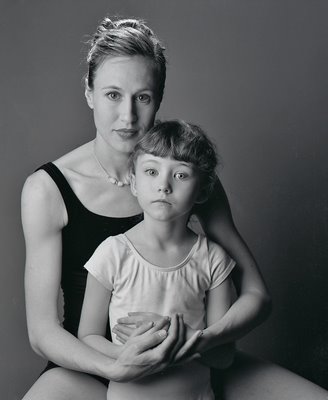
To my delight her first teacher was Andrea Hodge who had just retired from Ballet BC. Rebecca was in Andrea Hodge's first class. I asked Hodge to come to my studio to pose with Rebecca. This photograph represents a little bit of that transfer from a person to another that is one of the wonders of being human. And, who knows, perhaps some day Rebecca will be a ballerina.
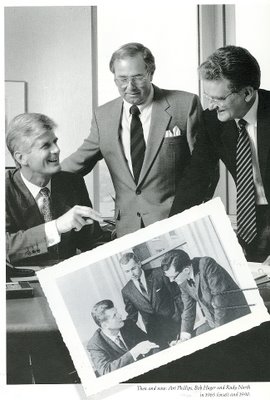
In 1990 I took the photographs for the annual report of the then already venerable Vancouver investment company, Phillips Hager & North. The folks at the design firm of Ray Torresan & Associates came up with the neat idea of taking pictures that paralleled ones taken in 1965. I had lots of fun. Here you can see (from left to right) Art Phillips, Bob Hager and Rudy North, in a scan of my copy of the report.
Then (1990) I compared notes with my friend Adrian du Plessis and we came to the conclusion that Phillips Hager & North was possibly the only investment firm of our city that had never had even a hint of financial scandal.
And today I read that the company has been sold to the Royal Bank. Like most good things of Vancouver memory will work wonders and soon nobody will remember the firm which will become a faceless section of a faceless bank. Alas!

Three hundred and sixty four days ago I wrote Why do I blog? A Northern Voice Perspective. I checked what I wrote (you can see all of it below) and the only few changes that I can notice is that I replaced my venerable Epson 1640 SU with an Epson V-700. And I also note that Rebecca is getting some competition from her sister Lauren in my blogs.

Paradoxically in the middle of having great FUN at this year's Northern Voice I have strained both Friday night and tonight in finding inspiration or motive to write the blog. Perhaps writing it in the evening when Rosemary is asleep is a private and even pleasantly lonely activity. Listening to a few read their blogs (some quite personal about failed relationships) at the Tiki Party, Thursday night, put me on the other end (receiving?) of my own blog. Pressing the Publish Post box sends my day's blog into an Einsteinian ether. That's comforting. Hearing it (a blog) bounce back as I did at the Waldorf was excruciating. I wonder if I will be back to normal by Sunday night?
The little girl, my granddaughter Rebecca, who illustrated this blog a year ago (picture taken in Uruguay in 2004) is is now 10 and I include here some pictures of her wearing that same dress we bought in Punta del Este, Uruguay in 2004.

I listened with interest the motivations of people who send pictures, tips and news essays to the CBC's Your Story in the Unconference. It would seem that they seek fame through that elusive medium of being published and "not paid be damned." It is quite difficult to borrow money from the bank with photo credits. It all made me think of Rebecca and a question she asked me as we left Opera Sushi, some weeks back. The Japanese chef had said, "Goodbye Rebecca," even though we were never introduced. It was obvious that the chef had read my blog about his establishment. Rebecca asked me, "Am I famous?" I told her I didn't think so. I further added, "You have to do something with your life before you can perhaps be famous."
WHY DO I BLOG? A NORTHERN PERSPECTIVE
Saturday, February 24, 2007
1979 motto of the Vancouver alternative scene rock band The Modernettes.
Get Modern or get fucked.

year and one month ago I started this blog with complete ignorance on what a blog was. The blog was attached to a simultaneously new web page, both designed by Doug Jasinki and Chris Botting at Skunkworks Creative Group Ltd.. That Doug Jasinski is also a lawyer brought with it some extra advantages in the wording of my profile.
Without knowing that it was a primitive version of a blog/wiki I had been a member some years before of the American Hosta Society Electronic Round Robin. It was the furious flaming in the forum postings that convinced me that my new blog should be what I call a "one sided" blog.
I was unsure on what the content of my blog was to be until I noticed my attraction to Bill Richardsons's CBC Radio show Bunny Watson. Alas! This radio program has been discontinued, but my memory of the program's quirky bringing together of apparently random facts through association has been my inspiration for my blog since. It is because of my blog's randomness that I have resisted classifying it into categories.
My new blog went along for a few weeks and was somehow noticed by Tim Bray who immediately advised me on two very necessary features. One was the RSS feed and the other the individual address links to every day's postings. I asked Bray what an RSS feed was and he told me, "Don't ask me, just tell your folks to install it." Looking into other blogs also convinced me on a self-imposed structure of:
1. No ranting.
2. No politics.
3. No religion.
4. No reviews of contemporary films.
5. No nude photographs. (I broke this rule once)
6. No blogs related to the day's news events except the deaths of interesting people whose pictures I have in my files.
7. No profanity except as quotes today and here
A large chunk of my blog has to do with my relationship to my granddaughter Rebecca Stewart (now 9). Slowly her sister Lauren (4) is beginning to share blog time.
Rebecca is not the only frequent visitor of my blog. My two daughters have told me that they have been afraid to ask me questions about my past or that there simply never seemed to be the time for them. They enjoy finding about themselves through my recounting of our past as a family.
I have been a freelance writer for 15 years and being able to write for Vancouver publications has all but disappeared. The incresing trend in using handout photographs (the same ones appear in most magazines and newspapers) has been paralleled by one of "modified" press releases made to look editorial. As newpsapers find it hard to increase their ad space there are many cuts in feelance hiring. For a while I was angry and frustrated.
This pent up anger has been released in my blogs on music, theatre and dance. I preview favourite artists and shows. I write what I want in the format that I want. No editor tells me I have to cut my word count. With this pent up anger gone my spirits are up and I can seek work calmly in the difficult market of photography.
My Epson 1640 SU flatbed scanner sits to the left of my monitor. It is a friendly companion that has served me well in my blogging. It has helped me make sense and put an order in my head of my extensive 30 year-old film files. When I don't have a photograph to fit into that day's blog I often find objects in my house that magically come to life when I place them on my scanner.
My wife Rosemary was at first aprehensive on my daily disappeances to sit in front of my computer. But after several valuable sales of my photographs found by search engines in my blog, including a recent one of Jane Jacobs to the Rockefeller Foundation she sees it as almost all good. So do I.
It would seem that my horizons in the blogging world are expanding. It was only yesterday,

at Moosecamp that I discovered a range of stuff I was completely ignorant about. I may not understand it yet, but there it is in my head ready to find future associations. Stuff like Drupel, WordPress, Twitter and Moo Cards.
The Other Side Of Two Dimensions
This is a repeat appearance of my blog from Friday, July 06, 2007 and in a nutshell it is what my talk with Kris Krug will be about in today's 2008 Northern Voice.

Sometime in 1985 I read A.K. Dewdney's The Planiverse, a strange novel about a two-dimensional world. Whenever I run into Dewdney Trunk Road (it seems to start and stop and meander through much of the Lower Mainland) I think of the Planiverse. Just like the inhabitants of The Planiverse would never think to look up and discover the third dimension, somehow it would be just as impossible to drive the length of Dewdney Trunk Road without getting lost, or would it?
Five years ago Rosemary and I took Rebecca (then 5) to our first vacation trip together. We went to Washington DC. We saw a few paintings at the National Gallery but I left the best for last. I took Rebecca to the special room and she stared at the 16 13/16 x 14 9/16 oil on panel and said, "Papi, she looks like the Mona Lisa. This must be a painting by da Vinci." Was I really proud of her! What is not generally known about Ginevra de' Benci is that the painting has two sides, an obverse one.

I have never tried to tell my Scottish heritage son-in-law, Bruce Stewart, my Scottish joke about the one-sided pancakes which cost less than the two-sided variety!
The "rules" of composition in photography are artificial tricks that are supposed to induce the movement of a viewer's eyes when the viewer looks at a photograph. Photographs that work will have at least one diagonal line or the horizon line will not be equidistant from top and bottom as that would create, instantaneously, two equally boring photographs. These "rules" try to overcome the limitation that a photograph compresses (supress is perhaps better here) our three dimensional reality into two.
Since so many of the professional digital cameras (DSLRs) as well as the professional film ones (SLRs) have focal plane shutters, they create photographs in which one section of the photograph (where the shutter starts) will be earlier in time than the last part of the photograph. Without going into more confusing details, few of us realize that these photographs, while supressing that third dimension, depth, do include the fourth one, time! In brief in a portrait of yourself the top of your head will be "younger" than your feet.
But I would disagree that a photograph has only two dimensions (if we eliminate time). Da Vinci's portrait at the National Gallery is a good example. A photograph, a good photograph printed on heavy art photographic paper, will have an edge and heft. Vintage photographs (printed at about the time that they were taken) by such photographers as Edward Weston or Manuel Alvarez Bravo, will be signed in pencil on the back. It might have a date and or a dealer's stamp. For me these photographs, even mine, have three dimensions. I can hold them, I can cradle them, I can tear them and fold them.
On February 24 I gave a little talk at the Northern Voice Blogging Conference at UBC. As I spoke I had that day's blog projected behind me. It featured one of my favourite photographs of Rebecca. I had also brought a hard copy (a very large, beautifully framed light jet print) and had placed it behind me. After my talk a woman (there were perhaps a couple of hundred people in the room) came up to me and said, "I don't understand why you brought that (pointing at the framed photograph), after all you had it projected behind you."
That left me shocked and speechless and I have given it much thought all these months. I have come to the conclusion that our visual world (the world of pictures we look at) is in a transition from a two (really three) dimensional world to one of a true two dimensions as seen on a monitor or flat screened TV. Not only is that happening very quickly but it is also a transition from the static layout of a photo album, a magazine or a picture book to one of images that scroll in a rapid sequence.
It would seem that the cutting edge world of web design is being forced to incorporate video. One image is not enough. So we have flash and Flash and other named versions of Flash and flash. I would argue that just as Cinemascope could not in the end compete with the ease of flicking on a TV set our web as we know it will be doomed (will it?) if it attempts to imitate TV.
At my age (64) I must attempt to be objective and not denigrate this transition. I might like to hold a photograph that might even smell of fixer (and thus not be properly washed) but that does not mean that the two-dimensional images with all that contrast and vivid colour of a computer monitor are to be deemed inferior.
Until those monitor images (in those strict two dimensions) incorporate a true third of depth (as in 3D) I will personally enjoy the heft, smell, feel and that other side of a paper photograph!
Andrea Hodge - The Essential Ballerina
Friday, February 22, 2008

At age 65 I am late into appreciating dance. I saw the Royal Winnipeg Ballet's Evelyn Hart in 1995 and I was smitten by her and with dance. At first it was ballet. Then I expanded my taste to modern ballet. From there I progressed further into modern dance, Butoh and contact improvisational with the wonderful Susan Elliott. But I will usually pass at watching tap dancing. I may be allergic to top hats and canes.
Through my 13 years of seeing dance of which the last five I have been often occompanied by Rebecca who is now 10. Lauren, 5, has seen her fair share the last year and a half.
There are dancers of he modern kind like Alison Denham, Crystal Pite, Emily Molnar and Cori Caulfield. But there are very few that I would define as ballerinas. A ballerina for me has to be graceful but also haughty, almost patrician. And the only dancer that has ever fit that category for me in Vancouver has been Adrea Hodge whom I first saw around 1995 when she danced with Ballet BC. It was perhaps because of her and others like Simone Orlando that Rebecca finally started taking dance classes at Arts Umbrella when she was 5.

To my delight her first teacher was Andrea Hodge who had just retired from Ballet BC. Rebecca was in Andrea Hodge's first class. I asked Hodge to come to my studio to pose with Rebecca. This photograph represents a little bit of that transfer from a person to another that is one of the wonders of being human. And, who knows, perhaps some day Rebecca will be a ballerina.
Phillips Hager & North - Alas! Is No More

In 1990 I took the photographs for the annual report of the then already venerable Vancouver investment company, Phillips Hager & North. The folks at the design firm of Ray Torresan & Associates came up with the neat idea of taking pictures that paralleled ones taken in 1965. I had lots of fun. Here you can see (from left to right) Art Phillips, Bob Hager and Rudy North, in a scan of my copy of the report.
Then (1990) I compared notes with my friend Adrian du Plessis and we came to the conclusion that Phillips Hager & North was possibly the only investment firm of our city that had never had even a hint of financial scandal.
And today I read that the company has been sold to the Royal Bank. Like most good things of Vancouver memory will work wonders and soon nobody will remember the firm which will become a faceless section of a faceless bank. Alas!
Thursday, February 21, 2008

Every Christmas this snob avoids Handel's Messiah. Instead on Christmas Eve at dinner I listen to Antonio Vivaldi's Gloria RV 589. From my eldest daughter Ale to my youngest granddaughter Lauren this work is so familiar we can all hum the rousing trumpet part of the beginning.
Last year I wrote about the Pacific Baroque Orquestra and Vivaldi's Gloria RV 589 here. The salient facts are below:
On Sunday October 27, 1996 at Ryerson Church in Vancouver. A local baroque group founded in 1990, the Pacific Baroque Orchestra, played the Vivaldi Gloria in D major RV 589. The concert not only opened my ears but also my eyes. The musicians, with the exception of the cellists, the bassist and the harpsichordist, to my consternation, were all playing standing up. The big surprise was the all female Electra Women’s Chorus. I had never heard a Vivaldi Gloria with an all female chorus. The performance introduced me to red-haired sisters Caitlin (a mezzo soprano) and Phoebe MacRae (a soprano) who were featured soloists. In later years I would enjoy hearing Caitlin with Vancouver’s Musica Intima and Phoebe as a frequent soloist with the PBO and with the Modern Baroque Opera (now sadly gone).
Twelve years later (this seems to be the pattern with the Gloria) the Pacific Baroque Orchestra is again performing this work on Saturday and on Sunday. For those who are in the know the PBO will perform on Friday here. If you do go to this concert on Friday at St. James Anglican please make a monetary contribution.
While Antonio Vivaldi wrote at least 5 Glorias only two have survived. One of them is the less performed RV 588 which is a bit more complex in nature. But RV 589 is the Gloria that is the favourite, and for a very good reason. In 1970 when I purchased an Acoustic Research amplifier, turntable and the then legendary AR-3A speakers the first work that I played to test my system was the Vivaldi Gloria. Why?
I have explained to Rebecca when she sees soldiers and asks me why they are soldiers that routine and training is essential just as it is in her piano playing. Piano playing and reading music has to be second nature and automatic. Once this happens she will be able to inject passion and interpretation.
Soldiers are trained so that when they are told to charge and run towards incoming machine gun fire as they did from the trenches of WW-I they will do so without fear or flinching. Somehow this boot camp training subverts our strong instinct to preserve ourselves from potential harm.
Vivaldi's Gloria RV 589 begins with a rousing trumpet and oboe part (the oboe almost sounds like a second trumpet) with sounds so rousing that I just might jump up and run towards hundreds of bullet spewing Maxims. If that were not enough to beckon me to this concert there is the fact that the PBO has chosen Victoria's Children's Choir to sing the choral and solo parts. In a bit of extra authenticity all we need to do is to imagine that St James Anglican is Ospedalle della Pietà and the children the young musician orphans.
Calgary's Hellen Cotter will play a natural trumpet. In a phone call this morning with PBO violinist Paul Luchkow he told me, "Her trumpet has a few bends so that it will fit in a car!" The serious (I am sure he sometimes thinks about smiling) and accomplished Washington McLain will play his baroque oboe. And of course our own home-grown virtuoso, Marc Destrubé will dazzle with his violin while simultaneously directing the orchestra.
I am sad that my own Rebecca will not be able to attend. To think that she might be 20 before she has a chance to hear this work live is almost a certainty. But then I was 27 when I first heard the Gloria. She has the time. But will I be there to enjoy it with her?
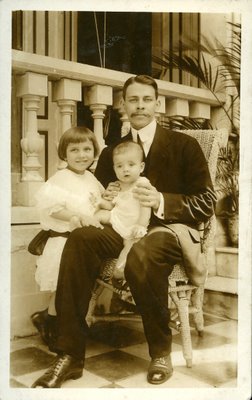
Last evening Rosemary and I sat down to watch Duel In The Sun with Gregory Peck and Joseph Cotton. My mother loved both of them so as a boy she took me to see as many films with them as she could. I have always been a sucker for Joseph Cotton in The Third Man. But the film on TCM was not Duel In The Sun but Green Dolphin Street (based on Elizabeth Goudge's novel Green Dolphin Country). I am glad of the TCM mixup.
For many years I have enjoyed the jazz standard Green Dolphin Street. My favourite version is from Very Tall - Oscar Peterson Trio With Milt Jackson. I never knew or suspected until last night that the music was from the score of the 1947 film by Polish composer Bronislau Kaper. That a film, set around 1850 when the age of sail was being menaced by the age of steam and New Zealand was virgin territory, could have inspired so many jazz performers is whimsical and wonderful.
The film has two gorgeous actresses, Lana Turner and Donna Reed who play sisters in a comedy of errors in which two men do not, finally, get the girl. At the end of this film Donna Reed becomes the most beautiful bride (bride of Christ)as she renounces the world to transform herself into the most beautiful nun I have ever seen anywhere. Green Dolphin Street won a Special Effects Oscar for an exciting earthquake and tidal wave scene.
As Rosemary and I watched the implausible plot, with scenes on a Channel Island, a remote China, a then unknown New Zealand (possibly the redwood forest in California), a beautiful clipper ship (the Green Dolphin) and scary Maori uprisings we compared notes on how these films are not made anymore. We both enjoyed Tommy Lee Jones's The Three Burials of Melquiades Estrada but we could not see too many more films like it. Such films like garlic and sex have to be enjoyed in moderation.
Green Dolphin Street was a fairy story/adventure film. Its unreality was what made it enjoyable even though the ending is more opera than Hollywood. As adults we need stories like these as much as children do.
When my uncle Tony (here with my mother and sitting on the lap of my grandfather Tirso de Irureta Goyena) used to come to visit us on weekends to fly his U-control model airplanes, in a nearby football field, he would tell his son Wency and me stories. We would plead: "Contanos un cuento." (literally story us a story and demonstrating how beautiful Spanish can be).
Uncle Tony would then tell us stories of piratas and espadachines (sworsdmen) and ladies in distress. Sometimes he would scare us with ghost stories.
As I watched Lana Turner's gowns and the elaborate finger waving of her hair and many other nice details, the experience last night was no different to the fantastic stories of my uncle Tony. I have a feeling he might have inherited his story telling from Tirso.
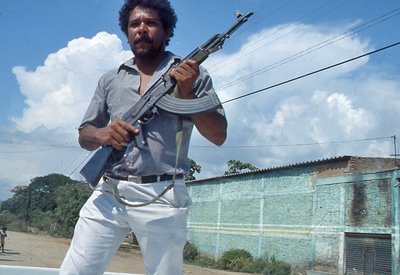
It is impossible not to look at Robert Capa's 1936 Fallen Soldier or Eddie Adams's picture of South Vietnamese Police Chief shooting the Viet Cong Suspect without feeling dread, fear, mystery and repulsion. For me there is a third one, fleeting (it was a BBC videocast)but seared in my brain. When I saw it in the evening of May 27, 1982. I was watching a what looked like a serene field of gray, green and blue. it was Goose Green in las Islas Malvinas (Falkland Islands).

I saw a streak in the low clouds of an almost overcast sky. The streak was from right to left and it passed quickly but somewhere in the middle of the screen it became a white poof. It was an Argentine Airforce Skyhawk that had been shot down, probably by a missile. As in the Capa and Adams images it is the transition from existence to nonexistence that fascinates us in a macabre way. The transition between good to evil has equally fascinated me through the years.
While I have seen dead bodies in morgues and the reconstituted face of a Buenos Aires neighbour who had been run over by a train (in Argentine when I was a young boy I somehow wangled my way to go to neighbourhood wakes) I have never really been close with death except when my mother took her last breath in her bed in our home in my presence and my wife Rosemary. I have always been fascinated with death, probably no more nor less than the average person. I purchased a coffin for my father and then for my mother but that was not quite death for me. I buried my father in a grave for only 7 years since I could not afford the perpetuity fee. Many years later a nephew of mine came back from searching for my father at the Chacarita Cemetery in Buenos Aires. He came back and threw a little white stone at me. "Your father is long gone. There is a Mrs García where he was. This stone might have been close to his remains." He was disgusted that I had been so frugal. I was moved.
It was about the time that my father died in 1965 when my world was black or white. I argued with my friend John Sullivan. Sullivan's parents were American but he had been born in Buenos Aires so he was drafted and was serving in the Argentine army. I argued that evil was black and good was white. There was no in between. He asserted that the world was gray. It was a mixture. "There is no absolute good or absolute evil." I was sure he was wrong.
My sailor friend Felipe and I while serving in the Argentine Navy used to make fun of officers and non-commissioned officers who took their job as soldiers seriously. 'Juegan a los soldaditos." "They like to play toy soldiers." But they seemed harmless enough and we did our best to stay out of their way. We went for errands to the Escuela De Mecánica de la Armada. This was the Navy Engineering School.
Years later it was difficult for me to reconcile that the school had become a centre of unspeakable torture and that our younger toy soldiers made people disappear. Worst of all was to find out that the hapless victims were thrown from helicopters over the River Plate and that some of these officers had first slit their victims' stomachs so that they would sink. Was the youngish Argentine Marine Corps corporal, Cabo Moraña whom we had some affection capable of such crimes? I wil never know.
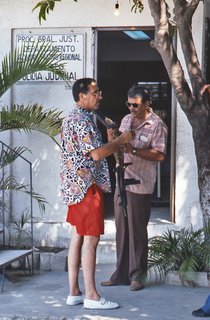
The boundary between good and evil really blurred for me in 1989 when I visited my friend the Police Chief of the Judicial Police of Acapulco. I followed and photographed every thing he did for a week. He had warned me in a most civil manner that, "I will show you everything but you have to be careful what you write about me for that magazine of yours (Vancouver Magazine).
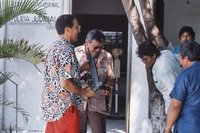
My job could be on the line." He was true to his word. I saw suspects being beaten, I saw drug busts and I was particularly moved by the entrance one day of a man called Rios (below, left). He was one of the Chief's most trusted cops. He stood at attention in front of the Chief. The Chief opened his drawer and gave him a .22 caliber revolver. Rios saluted and left.
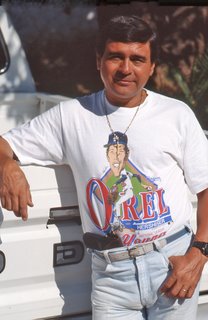
"What's the problem?" I asked the Chief. "We have a cop killer on the loose,"he answered. The next day Rios came in and pllaced the gun on the Chief's desk. The Chief put the gun away and Rios saluted and left. "What happened?" I asked. The reply was concise, "We don't have a cop killer."

To me the Chief's men looked no less thugs than the thugs that the Chief questioned and his staff slapped around. Betancourt(right), the Chief's bodyguard, who probably snuggled with with his AK-47 at night, looked like a huge and dangerous punk.
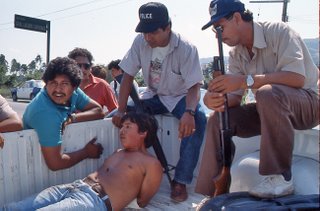
One Wednesday in the week that I was there a pretty young girl who must have been 18 came to see the chief. She mentioned that she had been raped by a young man but he had sworn to love and marry her. He had convinced the judge of this so he had been set free. She told the Chief that the young man was getting married that Saturday to someone else.

"I want justice," she said. A couple of days later we patrolled Acapulco's red light district and I spied our girl outside one of the establishments. I told the Chief, "She is a whore!" "I don't care if she is a whore. I will see justice done. I don't care if he is getting married in a church. We will be waiting. That crap about not being able to arrest someone in church is Hollywood crap."

When Saturday afternoon came the Chief beckoned me to follow him. We went to the nearby jail and I saw a man in black suit. "There is our man. We nailed the S.O.B. just before he got married." Three days later he was freed as his family paid a "special" bail.
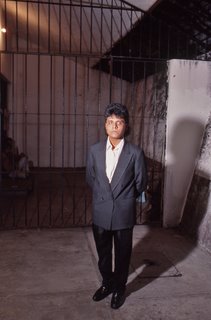
I have read of further and more serious incidents involving my friend the chief and I have mixed feelings. I don't really know what I would have done in his place. By then my blacks and whites were all muddled and I have yet to experience the violence of a near death.

The Chief is now 70 and he lives abroad. I would have never bet a peso for him surviving his job. But he survived. We chatted with Skype. I remember him singing at our neighbourhood parties in Arboledas, Mexico around 1974. His favourite singer was Tom Jones, "I look like him," he would tell us and then he would sing Little Green Apples.
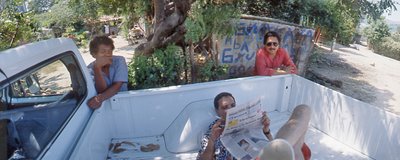
How did John Sullivan know at so early an age?

I come from a generation that could look at a stylized world map that would have quaint characters representing our then naive image of a country. Mexico would be represented by a Mexican sleeping siesta (face covered by a broad rimmed bandido hat) while leaning (most unrealistically) on a cactus. Germany had a man dressed in leather pants with braces and a feather hat. Argentina would have been represented by a gaucho holding boleadoras on a horse. Remote China would star a woman wearing a conical hat while planting rice.
That image has changed and many of us feel a bit disconcerted to find out that the Mexican pyramids of Teotihuacan have a nearby Wal-Mart. My generation expected beautiful and young women to greet us upon walking up the ramp (on the tarmac) of a Douglas DC-6. And we called them stewardesses.
It will soon come to pass that the Dallas Cowboys Cheerleaders will demand to stay on for years and will sue for damages if they are not kept until they are at least 60. This is as inevitable as the female flight attendants of Air Canada of which I need not write more.
In that idealized world of mine people on the radio had fine voices. They could articulate and spoke the language of that nation's radio stations with skill and in some cases with verve. Unlike the radio stations of Vancouver that seem to glow with speech impediments, lisps or even worse in our Mother Corporation's lineup, the Offputting voice of one of the hosts of As It Happens. Fortunately it isn't all bad and we have the saving grace of our local CBC's Belle Puri, Margaret Gallagher and Paul Grant.
A voice I missed was the booming, articulate and humorous voice of Doc Harris. It seems he is back here. With Doc Harris back perhaps somebody may look into giving another friend of mine a job and that would be J.B. Shayne.
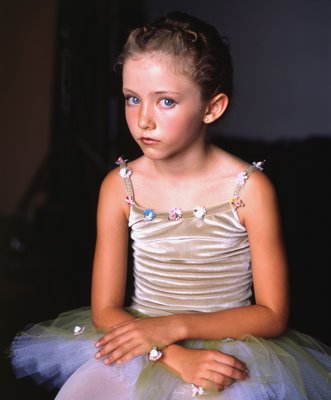

Rebecca Anne Stewart
August, 2005
Isabella de' Medici
Bronzino (Angelo Allori Di Cosimo) 1503-1572
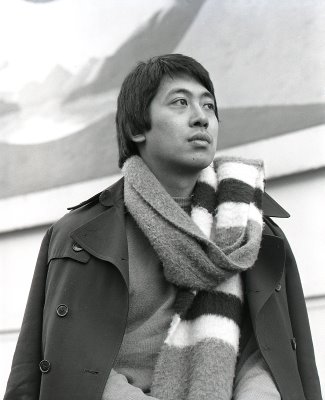
Before Thursday's ballet began I was in the lobby with my companion Abraham Rogatnick. I noticed an old man barely able to walk with his cane. I have been blessed not only with a photographic memory for faces but also with a memory for a face that may have changed after so many years. I acknowledged the man and introduced him to Rogatnick (who surely did know him and that was so), "Mr Lui (David Y.H.) this is Abraham Rogatnick."
Lui almost singlehandedly made dance a presence in Vancouver. Here he was coming into the "house he built" a virtual unknown. I felt sad. In happier times I photographed Lui by the side of the old Greyhound Bus station on Dunsmuir and Cambie. In those days they painted murals (on the Cambie side) on the high walls to decorate and hide the buses that were parked behind.
During the evening I recognized many of my former photographic subjects and some that I want to photograph soon. They were/are architects, writers and dancers. They are the lifeblood of our city's cultural existence. It is a pity that our city so soon forgets. We even do that (forget) the very men and women who made it all happen.
Yesterday I received a phone call from a woman who introduced herself, "Hi Alex this is your friend from Elba." Since Celia Duthie closed shop and moved first to Galeano and then to Salt Spring Island I have insisted that there is no way this active and powerful woman would ever live in exile on "Elba" as Napoleon did. She is soon to return. Of this I am convinced even though this time Celia is coming only for a visit with husband Nick. "We are really happy on Salt Spring and our furniture business/store/gallery is doing very well. Someday our furniture (mostly beautiful bookcases)will be sold at high prices at Sotheby's."
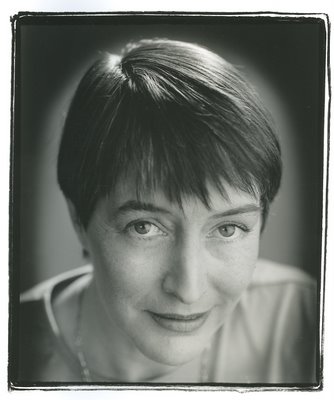
Sometime next week I will lunch with Celia and it will be like old times. Any idea that had some merit could be realized if you went to her, and I did many times. Once, most memorably (it was raining that day), she took me from her store on the corner of Robson and Hornby to the Vancouver Hotel through tunnels and passageways I did not know existed. We had lunch (we shared a club sandwich) in the central lounge that featured then and still features the women sphinxes.
In looking forward to lunch with Celia (the Vancouver Hotel, naturally) I remember all those other pleasant times we had together. Once we walked on Galeano and she showed me some open caves which I photographed with my Widelux panoramic camera.
It all reminds me of other good times I have had in Vancouver. They have been dance openings and concerts, openings of new buildings and art shows. What they all have in common is a sad ephemeral character. If you forget them then they never existed.
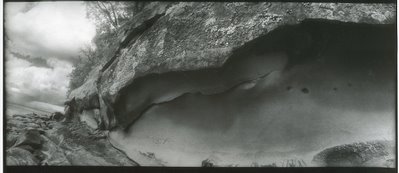
It further brings to mind one of my favourite paintings by J.M.W. Turner. It is called The Fighting Temeraire tugged to her last birth to be broken up (1839). She had fought valiantly at Trafalgar and here she was being pushed by a smoke-spewing tug boat that represented the future of naval warfare and eventually to the pushing of buttons without seeing the face of your enemy. It was a ship that helped defeat Napoleon but it did not prevent him from leaving Elba. It is my hope that someday, our very own version of the exile in Elba will escape and bring us some excitement. Our city would be better off for it.
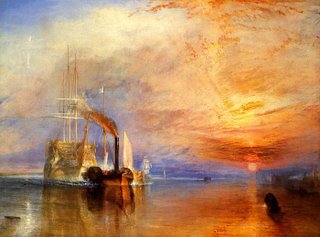

Every Christmas this snob avoids Handel's Messiah. Instead on Christmas Eve at dinner I listen to Antonio Vivaldi's Gloria RV 589. From my eldest daughter Ale to my youngest granddaughter Lauren this work is so familiar we can all hum the rousing trumpet part of the beginning.
Last year I wrote about the Pacific Baroque Orquestra and Vivaldi's Gloria RV 589 here. The salient facts are below:
On Sunday October 27, 1996 at Ryerson Church in Vancouver. A local baroque group founded in 1990, the Pacific Baroque Orchestra, played the Vivaldi Gloria in D major RV 589. The concert not only opened my ears but also my eyes. The musicians, with the exception of the cellists, the bassist and the harpsichordist, to my consternation, were all playing standing up. The big surprise was the all female Electra Women’s Chorus. I had never heard a Vivaldi Gloria with an all female chorus. The performance introduced me to red-haired sisters Caitlin (a mezzo soprano) and Phoebe MacRae (a soprano) who were featured soloists. In later years I would enjoy hearing Caitlin with Vancouver’s Musica Intima and Phoebe as a frequent soloist with the PBO and with the Modern Baroque Opera (now sadly gone).
Twelve years later (this seems to be the pattern with the Gloria) the Pacific Baroque Orchestra is again performing this work on Saturday and on Sunday. For those who are in the know the PBO will perform on Friday here. If you do go to this concert on Friday at St. James Anglican please make a monetary contribution.
While Antonio Vivaldi wrote at least 5 Glorias only two have survived. One of them is the less performed RV 588 which is a bit more complex in nature. But RV 589 is the Gloria that is the favourite, and for a very good reason. In 1970 when I purchased an Acoustic Research amplifier, turntable and the then legendary AR-3A speakers the first work that I played to test my system was the Vivaldi Gloria. Why?
I have explained to Rebecca when she sees soldiers and asks me why they are soldiers that routine and training is essential just as it is in her piano playing. Piano playing and reading music has to be second nature and automatic. Once this happens she will be able to inject passion and interpretation.
Soldiers are trained so that when they are told to charge and run towards incoming machine gun fire as they did from the trenches of WW-I they will do so without fear or flinching. Somehow this boot camp training subverts our strong instinct to preserve ourselves from potential harm.
Vivaldi's Gloria RV 589 begins with a rousing trumpet and oboe part (the oboe almost sounds like a second trumpet) with sounds so rousing that I just might jump up and run towards hundreds of bullet spewing Maxims. If that were not enough to beckon me to this concert there is the fact that the PBO has chosen Victoria's Children's Choir to sing the choral and solo parts. In a bit of extra authenticity all we need to do is to imagine that St James Anglican is Ospedalle della Pietà and the children the young musician orphans.
Calgary's Hellen Cotter will play a natural trumpet. In a phone call this morning with PBO violinist Paul Luchkow he told me, "Her trumpet has a few bends so that it will fit in a car!" The serious (I am sure he sometimes thinks about smiling) and accomplished Washington McLain will play his baroque oboe. And of course our own home-grown virtuoso, Marc Destrubé will dazzle with his violin while simultaneously directing the orchestra.
I am sad that my own Rebecca will not be able to attend. To think that she might be 20 before she has a chance to hear this work live is almost a certainty. But then I was 27 when I first heard the Gloria. She has the time. But will I be there to enjoy it with her?
Story Me A Story On Green Dolphin Street
Wednesday, February 20, 2008

Last evening Rosemary and I sat down to watch Duel In The Sun with Gregory Peck and Joseph Cotton. My mother loved both of them so as a boy she took me to see as many films with them as she could. I have always been a sucker for Joseph Cotton in The Third Man. But the film on TCM was not Duel In The Sun but Green Dolphin Street (based on Elizabeth Goudge's novel Green Dolphin Country). I am glad of the TCM mixup.
For many years I have enjoyed the jazz standard Green Dolphin Street. My favourite version is from Very Tall - Oscar Peterson Trio With Milt Jackson. I never knew or suspected until last night that the music was from the score of the 1947 film by Polish composer Bronislau Kaper. That a film, set around 1850 when the age of sail was being menaced by the age of steam and New Zealand was virgin territory, could have inspired so many jazz performers is whimsical and wonderful.
The film has two gorgeous actresses, Lana Turner and Donna Reed who play sisters in a comedy of errors in which two men do not, finally, get the girl. At the end of this film Donna Reed becomes the most beautiful bride (bride of Christ)as she renounces the world to transform herself into the most beautiful nun I have ever seen anywhere. Green Dolphin Street won a Special Effects Oscar for an exciting earthquake and tidal wave scene.
As Rosemary and I watched the implausible plot, with scenes on a Channel Island, a remote China, a then unknown New Zealand (possibly the redwood forest in California), a beautiful clipper ship (the Green Dolphin) and scary Maori uprisings we compared notes on how these films are not made anymore. We both enjoyed Tommy Lee Jones's The Three Burials of Melquiades Estrada but we could not see too many more films like it. Such films like garlic and sex have to be enjoyed in moderation.
Green Dolphin Street was a fairy story/adventure film. Its unreality was what made it enjoyable even though the ending is more opera than Hollywood. As adults we need stories like these as much as children do.
When my uncle Tony (here with my mother and sitting on the lap of my grandfather Tirso de Irureta Goyena) used to come to visit us on weekends to fly his U-control model airplanes, in a nearby football field, he would tell his son Wency and me stories. We would plead: "Contanos un cuento." (literally story us a story and demonstrating how beautiful Spanish can be).
Uncle Tony would then tell us stories of piratas and espadachines (sworsdmen) and ladies in distress. Sometimes he would scare us with ghost stories.
As I watched Lana Turner's gowns and the elaborate finger waving of her hair and many other nice details, the experience last night was no different to the fantastic stories of my uncle Tony. I have a feeling he might have inherited his story telling from Tirso.
Black, White, Gray & Goose Green
Tuesday, February 19, 2008

It is impossible not to look at Robert Capa's 1936 Fallen Soldier or Eddie Adams's picture of South Vietnamese Police Chief shooting the Viet Cong Suspect without feeling dread, fear, mystery and repulsion. For me there is a third one, fleeting (it was a BBC videocast)but seared in my brain. When I saw it in the evening of May 27, 1982. I was watching a what looked like a serene field of gray, green and blue. it was Goose Green in las Islas Malvinas (Falkland Islands).

I saw a streak in the low clouds of an almost overcast sky. The streak was from right to left and it passed quickly but somewhere in the middle of the screen it became a white poof. It was an Argentine Airforce Skyhawk that had been shot down, probably by a missile. As in the Capa and Adams images it is the transition from existence to nonexistence that fascinates us in a macabre way. The transition between good to evil has equally fascinated me through the years.
While I have seen dead bodies in morgues and the reconstituted face of a Buenos Aires neighbour who had been run over by a train (in Argentine when I was a young boy I somehow wangled my way to go to neighbourhood wakes) I have never really been close with death except when my mother took her last breath in her bed in our home in my presence and my wife Rosemary. I have always been fascinated with death, probably no more nor less than the average person. I purchased a coffin for my father and then for my mother but that was not quite death for me. I buried my father in a grave for only 7 years since I could not afford the perpetuity fee. Many years later a nephew of mine came back from searching for my father at the Chacarita Cemetery in Buenos Aires. He came back and threw a little white stone at me. "Your father is long gone. There is a Mrs García where he was. This stone might have been close to his remains." He was disgusted that I had been so frugal. I was moved.
It was about the time that my father died in 1965 when my world was black or white. I argued with my friend John Sullivan. Sullivan's parents were American but he had been born in Buenos Aires so he was drafted and was serving in the Argentine army. I argued that evil was black and good was white. There was no in between. He asserted that the world was gray. It was a mixture. "There is no absolute good or absolute evil." I was sure he was wrong.
My sailor friend Felipe and I while serving in the Argentine Navy used to make fun of officers and non-commissioned officers who took their job as soldiers seriously. 'Juegan a los soldaditos." "They like to play toy soldiers." But they seemed harmless enough and we did our best to stay out of their way. We went for errands to the Escuela De Mecánica de la Armada. This was the Navy Engineering School.
Years later it was difficult for me to reconcile that the school had become a centre of unspeakable torture and that our younger toy soldiers made people disappear. Worst of all was to find out that the hapless victims were thrown from helicopters over the River Plate and that some of these officers had first slit their victims' stomachs so that they would sink. Was the youngish Argentine Marine Corps corporal, Cabo Moraña whom we had some affection capable of such crimes? I wil never know.

The boundary between good and evil really blurred for me in 1989 when I visited my friend the Police Chief of the Judicial Police of Acapulco. I followed and photographed every thing he did for a week. He had warned me in a most civil manner that, "I will show you everything but you have to be careful what you write about me for that magazine of yours (Vancouver Magazine).

My job could be on the line." He was true to his word. I saw suspects being beaten, I saw drug busts and I was particularly moved by the entrance one day of a man called Rios (below, left). He was one of the Chief's most trusted cops. He stood at attention in front of the Chief. The Chief opened his drawer and gave him a .22 caliber revolver. Rios saluted and left.

"What's the problem?" I asked the Chief. "We have a cop killer on the loose,"he answered. The next day Rios came in and pllaced the gun on the Chief's desk. The Chief put the gun away and Rios saluted and left. "What happened?" I asked. The reply was concise, "We don't have a cop killer."

To me the Chief's men looked no less thugs than the thugs that the Chief questioned and his staff slapped around. Betancourt(right), the Chief's bodyguard, who probably snuggled with with his AK-47 at night, looked like a huge and dangerous punk.

One Wednesday in the week that I was there a pretty young girl who must have been 18 came to see the chief. She mentioned that she had been raped by a young man but he had sworn to love and marry her. He had convinced the judge of this so he had been set free. She told the Chief that the young man was getting married that Saturday to someone else.

"I want justice," she said. A couple of days later we patrolled Acapulco's red light district and I spied our girl outside one of the establishments. I told the Chief, "She is a whore!" "I don't care if she is a whore. I will see justice done. I don't care if he is getting married in a church. We will be waiting. That crap about not being able to arrest someone in church is Hollywood crap."

When Saturday afternoon came the Chief beckoned me to follow him. We went to the nearby jail and I saw a man in black suit. "There is our man. We nailed the S.O.B. just before he got married." Three days later he was freed as his family paid a "special" bail.

I have read of further and more serious incidents involving my friend the chief and I have mixed feelings. I don't really know what I would have done in his place. By then my blacks and whites were all muddled and I have yet to experience the violence of a near death.

The Chief is now 70 and he lives abroad. I would have never bet a peso for him surviving his job. But he survived. We chatted with Skype. I remember him singing at our neighbourhood parties in Arboledas, Mexico around 1974. His favourite singer was Tom Jones, "I look like him," he would tell us and then he would sing Little Green Apples.

How did John Sullivan know at so early an age?
Doc Harris & Those Air Canada Flight Attendants
Monday, February 18, 2008

I come from a generation that could look at a stylized world map that would have quaint characters representing our then naive image of a country. Mexico would be represented by a Mexican sleeping siesta (face covered by a broad rimmed bandido hat) while leaning (most unrealistically) on a cactus. Germany had a man dressed in leather pants with braces and a feather hat. Argentina would have been represented by a gaucho holding boleadoras on a horse. Remote China would star a woman wearing a conical hat while planting rice.
That image has changed and many of us feel a bit disconcerted to find out that the Mexican pyramids of Teotihuacan have a nearby Wal-Mart. My generation expected beautiful and young women to greet us upon walking up the ramp (on the tarmac) of a Douglas DC-6. And we called them stewardesses.
It will soon come to pass that the Dallas Cowboys Cheerleaders will demand to stay on for years and will sue for damages if they are not kept until they are at least 60. This is as inevitable as the female flight attendants of Air Canada of which I need not write more.
In that idealized world of mine people on the radio had fine voices. They could articulate and spoke the language of that nation's radio stations with skill and in some cases with verve. Unlike the radio stations of Vancouver that seem to glow with speech impediments, lisps or even worse in our Mother Corporation's lineup, the Offputting voice of one of the hosts of As It Happens. Fortunately it isn't all bad and we have the saving grace of our local CBC's Belle Puri, Margaret Gallagher and Paul Grant.
A voice I missed was the booming, articulate and humorous voice of Doc Harris. It seems he is back here. With Doc Harris back perhaps somebody may look into giving another friend of mine a job and that would be J.B. Shayne.
Rebecca Stewart & Isabella de' Medici
Sunday, February 17, 2008


Rebecca Anne Stewart
August, 2005
Isabella de' Medici
Bronzino (Angelo Allori Di Cosimo) 1503-1572
David Y.H. Lui, Celia Duthie & The Fighting Temeraire
Saturday, February 16, 2008
Before Thursday's ballet began I was in the lobby with my companion Abraham Rogatnick. I noticed an old man barely able to walk with his cane. I have been blessed not only with a photographic memory for faces but also with a memory for a face that may have changed after so many years. I acknowledged the man and introduced him to Rogatnick (who surely did know him and that was so), "Mr Lui (David Y.H.) this is Abraham Rogatnick."
Lui almost singlehandedly made dance a presence in Vancouver. Here he was coming into the "house he built" a virtual unknown. I felt sad. In happier times I photographed Lui by the side of the old Greyhound Bus station on Dunsmuir and Cambie. In those days they painted murals (on the Cambie side) on the high walls to decorate and hide the buses that were parked behind.
During the evening I recognized many of my former photographic subjects and some that I want to photograph soon. They were/are architects, writers and dancers. They are the lifeblood of our city's cultural existence. It is a pity that our city so soon forgets. We even do that (forget) the very men and women who made it all happen.
Yesterday I received a phone call from a woman who introduced herself, "Hi Alex this is your friend from Elba." Since Celia Duthie closed shop and moved first to Galeano and then to Salt Spring Island I have insisted that there is no way this active and powerful woman would ever live in exile on "Elba" as Napoleon did. She is soon to return. Of this I am convinced even though this time Celia is coming only for a visit with husband Nick. "We are really happy on Salt Spring and our furniture business/store/gallery is doing very well. Someday our furniture (mostly beautiful bookcases)will be sold at high prices at Sotheby's."

Sometime next week I will lunch with Celia and it will be like old times. Any idea that had some merit could be realized if you went to her, and I did many times. Once, most memorably (it was raining that day), she took me from her store on the corner of Robson and Hornby to the Vancouver Hotel through tunnels and passageways I did not know existed. We had lunch (we shared a club sandwich) in the central lounge that featured then and still features the women sphinxes.
In looking forward to lunch with Celia (the Vancouver Hotel, naturally) I remember all those other pleasant times we had together. Once we walked on Galeano and she showed me some open caves which I photographed with my Widelux panoramic camera.
It all reminds me of other good times I have had in Vancouver. They have been dance openings and concerts, openings of new buildings and art shows. What they all have in common is a sad ephemeral character. If you forget them then they never existed.

It further brings to mind one of my favourite paintings by J.M.W. Turner. It is called The Fighting Temeraire tugged to her last birth to be broken up (1839). She had fought valiantly at Trafalgar and here she was being pushed by a smoke-spewing tug boat that represented the future of naval warfare and eventually to the pushing of buttons without seeing the face of your enemy. It was a ship that helped defeat Napoleon but it did not prevent him from leaving Elba. It is my hope that someday, our very own version of the exile in Elba will escape and bring us some excitement. Our city would be better off for it.

Friday, February 15, 2008
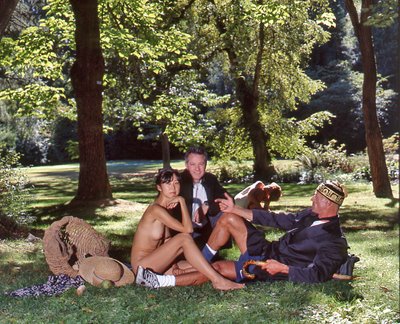
While enough has been written on how Antonio Vivaldi's Le Quattro Stagioni has been recorded to death and I have observed that Vancouver restaurants have a tendency to play either the Four Seasons, Billie Holiday or the Gipsy Kings, nothing can be done to modify my perception that the Largo: la pioggia of L'Inverno, is one of the most beautiful compositions by any composer ever. I would even enjoy it (tolerate?) played by Ornette Coleman on his plastic saxophone. Last night's performance of the movement by Ballet BC's Chengxin Wei (with "artist resident in cahoots" Tiko Kerr) has left me thinking about my tolerance.
I feel fortunate that I am not a dance reviewer and that my blog is an outlet for fun. This means I can write about anything I want, in whatever way I want and I don't have to be complete in the when, where and how department. But it is unfortunate that today I will break ( I may have broken it before) my commitment to not insert photographs with nudes. Children including my granddaughter Rebecca (although she has seen my nudes aplenty) might lurk in these pages.
A true snob (fortunately I am not one) would have left with companion (Abraham Rogatnick) after the first dance performance, Dominique Dumais's a/way inside. It featured the tall and cool (like my favourite Southern style unsweetened iced tea) Edmond Kilpatrick (his swan song for Ballet BC as he is leaving to free lance) and the electric Alexis Fletcher (a product of Arty Gordon's dance program at Arts Umbrella). They did not disappoint. This was pure dance unudulterated by anything. It just was.
But John Alleyne's The Four Seasons (fortunately Rogatnick and I stayed) was a wonderful three-ring-circus of surprises.
Dancer Makaila Wallace, a combination of Teflon, grace and femininity, packed tons of charm in her tiny package. We may walk but Wallace prances. She was the delightful unifying presence in Alleyne's work. And Jones Henry was her elegant and unruffled foil.
In composer Michael Bushnell's Musical Prelude and Postlude (I was not aware that word existed) Alan Storey's "Machine" tracked dancer Wallace inexorably. The "Machine" hovered over the stage and it looked like a spider cyborg from hell. At the end of the night the machine lowered itself (does it rely on humans?) and showed Wallace's tracks on paper(?). Even during the various curtains calls every movement that Wallace made was recorded by the "Machine". After the performance we went back stage to inspect the "Machine". Alan Storey gave us an explanation and then retired, probably to transmute some base metal into gold.
But it was the Vivaldi Winter Largo that left me speechless, troubled and in the end satisfied by Chengxin Wei's (below) completely out of context (to me, anyway) movements. The movements, jerky but full of passion, were softened by Tiko Kerr's smile behind the lucite screen on which he doodled with marking pens. The glowing and cheerful colours foretold the promise of a coming spring.
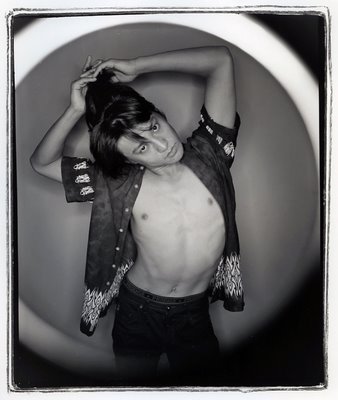
And John Alleyne again proved that there are plenty of surprises to come in his bag of tricks as he pushes the boundaries of modern ballet in Vancouver.
As for the picture above here is the explanation. In 1998 Nuvo (a magazine for those with hefty pocket books) comissioned me to recreate photographically Édouard Manet's Le déjouner sur l'herbe . To avoid possible problems with the police I chose the little known Shakespeare Garden (right next to the Vancouver Police's horse stables) in Stanley Park. I had friend Helen Yagi to pose undraped and Ona Grauer to pose draped behind. My friend Tiko Kerr (at right in picture) immediately volunteered and somehow persuaded art dealer David Heffel that his reputation was not at stake if he posed for us.
The picture represents for me the always cheerful personality of Tiko Kerr and how we are lucky to have him with us in Vancouver. Kudos to Alleyne for seeking his collaboration as well as Storey's and Bushnell's.
And I must not forget to mention the bonus of being able to see the senior dancers of Arts Umbrella. My eyes were only for the most flexible and tall Nina Davies.
If Alleyne does not create a dance that will exclusively feature brother dancers Connor and James Gnam next year I will be disappointed.
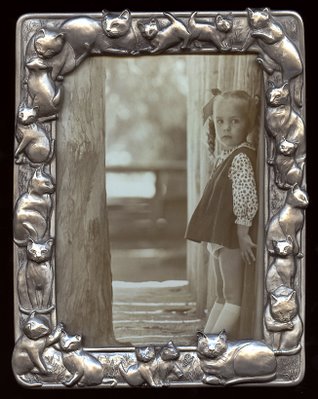
Our lives are full of tragedy. And the biggest one for me is an awful regret in the knowledge that I never really told my mother or my father that I loved them. I have made up for lost time by telling Rosemary not only that I love her but I am constantly asking her if she is ok. It drives her crazy. After 40 years of marriage I can assert that I feel a great glow of satisfaction in my affection for her. One of the advantages of this is that non sequiturs rarely happen when we talk. I might be looking out of the living room and say, "It has to be moved." Rosemary without looking out of the window will finish, "because that Rhododendrum racemosum is not happy there."
Since Alexandra, 38, moved to Lillooet I have been thinking a lot about her. I talk with her on Skype or we have video conversations in MSN and she always signs off with, "Te quiero mucho, Papi." (I love you lots). When Rosemary's situation at work began to look shaky Ale (as we have called Alexandra since we lived in Mexico City so many years ago and that was what her friends called her.) said that she thought she could contribute with $500 per month. Rosemary politely turned her down but glowed inside at the thought that our daughter does care for our welfare.
I have become close with Ale and I confide in her as I may not have in the past. Paradoxically the geographic distancing has been a godsend. I really miss her and I always look forward to our expeditions to Lillooet with Rebecca and Lauren.
I appreciate in more ways than Ale will ever know (Or I could be wrong about this.) that she constantly tells me how she loves me. Both Rosemary and I feel reinforced when Ale tells us how grateful she is that we insisted she finish at UBC or that she not drop her guitar lessons.
I feel lucky and revel at the fact that I know all the above and that it is not too late to tell my Ale that I love her. And this I do.

While enough has been written on how Antonio Vivaldi's Le Quattro Stagioni has been recorded to death and I have observed that Vancouver restaurants have a tendency to play either the Four Seasons, Billie Holiday or the Gipsy Kings, nothing can be done to modify my perception that the Largo: la pioggia of L'Inverno, is one of the most beautiful compositions by any composer ever. I would even enjoy it (tolerate?) played by Ornette Coleman on his plastic saxophone. Last night's performance of the movement by Ballet BC's Chengxin Wei (with "artist resident in cahoots" Tiko Kerr) has left me thinking about my tolerance.
I feel fortunate that I am not a dance reviewer and that my blog is an outlet for fun. This means I can write about anything I want, in whatever way I want and I don't have to be complete in the when, where and how department. But it is unfortunate that today I will break ( I may have broken it before) my commitment to not insert photographs with nudes. Children including my granddaughter Rebecca (although she has seen my nudes aplenty) might lurk in these pages.
A true snob (fortunately I am not one) would have left with companion (Abraham Rogatnick) after the first dance performance, Dominique Dumais's a/way inside. It featured the tall and cool (like my favourite Southern style unsweetened iced tea) Edmond Kilpatrick (his swan song for Ballet BC as he is leaving to free lance) and the electric Alexis Fletcher (a product of Arty Gordon's dance program at Arts Umbrella). They did not disappoint. This was pure dance unudulterated by anything. It just was.
But John Alleyne's The Four Seasons (fortunately Rogatnick and I stayed) was a wonderful three-ring-circus of surprises.
Dancer Makaila Wallace, a combination of Teflon, grace and femininity, packed tons of charm in her tiny package. We may walk but Wallace prances. She was the delightful unifying presence in Alleyne's work. And Jones Henry was her elegant and unruffled foil.
In composer Michael Bushnell's Musical Prelude and Postlude (I was not aware that word existed) Alan Storey's "Machine" tracked dancer Wallace inexorably. The "Machine" hovered over the stage and it looked like a spider cyborg from hell. At the end of the night the machine lowered itself (does it rely on humans?) and showed Wallace's tracks on paper(?). Even during the various curtains calls every movement that Wallace made was recorded by the "Machine". After the performance we went back stage to inspect the "Machine". Alan Storey gave us an explanation and then retired, probably to transmute some base metal into gold.
But it was the Vivaldi Winter Largo that left me speechless, troubled and in the end satisfied by Chengxin Wei's (below) completely out of context (to me, anyway) movements. The movements, jerky but full of passion, were softened by Tiko Kerr's smile behind the lucite screen on which he doodled with marking pens. The glowing and cheerful colours foretold the promise of a coming spring.

And John Alleyne again proved that there are plenty of surprises to come in his bag of tricks as he pushes the boundaries of modern ballet in Vancouver.
As for the picture above here is the explanation. In 1998 Nuvo (a magazine for those with hefty pocket books) comissioned me to recreate photographically Édouard Manet's Le déjouner sur l'herbe . To avoid possible problems with the police I chose the little known Shakespeare Garden (right next to the Vancouver Police's horse stables) in Stanley Park. I had friend Helen Yagi to pose undraped and Ona Grauer to pose draped behind. My friend Tiko Kerr (at right in picture) immediately volunteered and somehow persuaded art dealer David Heffel that his reputation was not at stake if he posed for us.
The picture represents for me the always cheerful personality of Tiko Kerr and how we are lucky to have him with us in Vancouver. Kudos to Alleyne for seeking his collaboration as well as Storey's and Bushnell's.
And I must not forget to mention the bonus of being able to see the senior dancers of Arts Umbrella. My eyes were only for the most flexible and tall Nina Davies.
If Alleyne does not create a dance that will exclusively feature brother dancers Connor and James Gnam next year I will be disappointed.
Alexandra Elizabeth Waterhouse-Hayward - A Valentine
Thursday, February 14, 2008

Our lives are full of tragedy. And the biggest one for me is an awful regret in the knowledge that I never really told my mother or my father that I loved them. I have made up for lost time by telling Rosemary not only that I love her but I am constantly asking her if she is ok. It drives her crazy. After 40 years of marriage I can assert that I feel a great glow of satisfaction in my affection for her. One of the advantages of this is that non sequiturs rarely happen when we talk. I might be looking out of the living room and say, "It has to be moved." Rosemary without looking out of the window will finish, "because that Rhododendrum racemosum is not happy there."
Since Alexandra, 38, moved to Lillooet I have been thinking a lot about her. I talk with her on Skype or we have video conversations in MSN and she always signs off with, "Te quiero mucho, Papi." (I love you lots). When Rosemary's situation at work began to look shaky Ale (as we have called Alexandra since we lived in Mexico City so many years ago and that was what her friends called her.) said that she thought she could contribute with $500 per month. Rosemary politely turned her down but glowed inside at the thought that our daughter does care for our welfare.
I have become close with Ale and I confide in her as I may not have in the past. Paradoxically the geographic distancing has been a godsend. I really miss her and I always look forward to our expeditions to Lillooet with Rebecca and Lauren.
I appreciate in more ways than Ale will ever know (Or I could be wrong about this.) that she constantly tells me how she loves me. Both Rosemary and I feel reinforced when Ale tells us how grateful she is that we insisted she finish at UBC or that she not drop her guitar lessons.
I feel lucky and revel at the fact that I know all the above and that it is not too late to tell my Ale that I love her. And this I do.
Wednesday, February 13, 2008
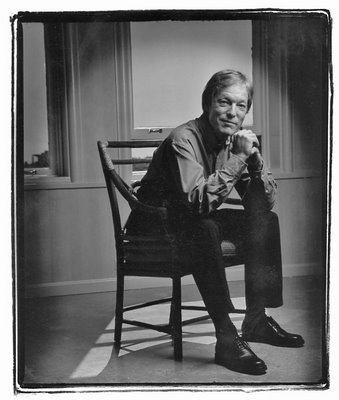
It was 1970 and Rosemary and I had been married for two years. We lived in Mexico City's Zona Rosa within walking distance of the Cine Chapultepec. It was right next to the beautiful glorieta (roundabout) of la Diana Cazadora (Diana the Huntress). For a while in the 50s during president Adolfo Ruiz Cortines's 6 years in office his wife had ordered a metal "bikini" bottom attached to the rousing and beautiful statue that was also a fountain. Since we left Mexico City in 1975 the fountain was moved and perhaps the Cine Chapultepec is long gone. But I remember it well for several reasons.
With my friend and mentor Raúl Guerrero Montemayor (who speaks at least 10 languages) we saw many Antonioni films at the Chapultepec. We also saw Italian comedies. A couple featured bidet jokes. More often than not the Chapultepec was packed full and Raúl and I would sit separately. There would be a bidet joke and I could hear him laugh as he would hear me laugh. Mexicans had no knowledge of the function of bidets. It was at the Chapultepec that Raúl converted me to a film snob and I am grateful!
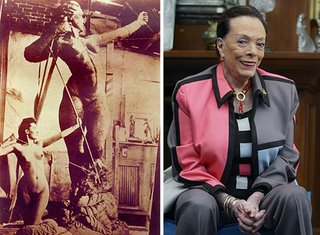
But it was in 1970 when the movie house seared in my memory a couple of events that I can now look back with a smile. When Rosemary and I approached the ticket booth, we were asked for ID. We were both flatered by this!
The featured film (classified as Solo Adultos ny Mexican censors) was Ken Russell's The Music Lovers which was out of the ordinary biography on Pyotr Ilyich Tchaikovsky played by Richard Chamberlain. The film is full of nightmarish flashbacks, and one as a child Tchaikovsky sees his mother die horribly, forcibly lm and nightmare forcibly immersed in scalding water as a supposed cure for cholera, and is haunted by the scene throughout his musical career. Tchaikovsky dies of cholera in a bathtub scene so horrible that I refused to see Richard Chamberlain films for a long time.
In 1998 I had the opportunity to photograph Chamberlain for the Globe & Mail at the Vancouver Hotel. He was gracious to Globe writer Chris Dafoe and Chamberlain laughed with me when I told him of the Cine Chapultepec incident. He considered that film one of his best even if most people have forgotten it.
I wish I could tell him that I plan to see him in The Man In The Iron Mask with Rebecca and as many of his swashbucklers as I can find. The Music Lovers will have to wait a bit. Below is a photograph I took in 1997 that shows the Diana in its new location much closer to the (only now) aptly named Cine Diana which is a modern type of movie house without the charm of our old Cine Chapultepec.


It was 1970 and Rosemary and I had been married for two years. We lived in Mexico City's Zona Rosa within walking distance of the Cine Chapultepec. It was right next to the beautiful glorieta (roundabout) of la Diana Cazadora (Diana the Huntress). For a while in the 50s during president Adolfo Ruiz Cortines's 6 years in office his wife had ordered a metal "bikini" bottom attached to the rousing and beautiful statue that was also a fountain. Since we left Mexico City in 1975 the fountain was moved and perhaps the Cine Chapultepec is long gone. But I remember it well for several reasons.
With my friend and mentor Raúl Guerrero Montemayor (who speaks at least 10 languages) we saw many Antonioni films at the Chapultepec. We also saw Italian comedies. A couple featured bidet jokes. More often than not the Chapultepec was packed full and Raúl and I would sit separately. There would be a bidet joke and I could hear him laugh as he would hear me laugh. Mexicans had no knowledge of the function of bidets. It was at the Chapultepec that Raúl converted me to a film snob and I am grateful!

But it was in 1970 when the movie house seared in my memory a couple of events that I can now look back with a smile. When Rosemary and I approached the ticket booth, we were asked for ID. We were both flatered by this!
The featured film (classified as Solo Adultos ny Mexican censors) was Ken Russell's The Music Lovers which was out of the ordinary biography on Pyotr Ilyich Tchaikovsky played by Richard Chamberlain. The film is full of nightmarish flashbacks, and one as a child Tchaikovsky sees his mother die horribly, forcibly lm and nightmare forcibly immersed in scalding water as a supposed cure for cholera, and is haunted by the scene throughout his musical career. Tchaikovsky dies of cholera in a bathtub scene so horrible that I refused to see Richard Chamberlain films for a long time.
In 1998 I had the opportunity to photograph Chamberlain for the Globe & Mail at the Vancouver Hotel. He was gracious to Globe writer Chris Dafoe and Chamberlain laughed with me when I told him of the Cine Chapultepec incident. He considered that film one of his best even if most people have forgotten it.
I wish I could tell him that I plan to see him in The Man In The Iron Mask with Rebecca and as many of his swashbucklers as I can find. The Music Lovers will have to wait a bit. Below is a photograph I took in 1997 that shows the Diana in its new location much closer to the (only now) aptly named Cine Diana which is a modern type of movie house without the charm of our old Cine Chapultepec.

Tuesday, February 12, 2008
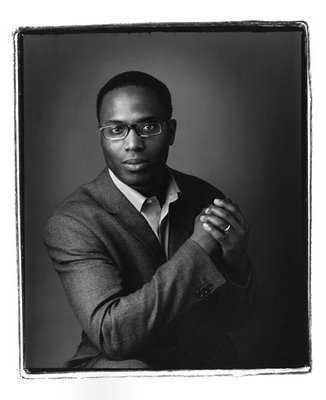
Last night VLM Editor/Art Director Bob Mercer and I went to Ballet BC's Studio Series. In these events held at the Scotia Bank Dance Centre you get the privileged view of watching a work in progress (John Alleyne's The Four Seasons) unfold and then have the promise of seeing the work performed complete, in this case, in two days on Thursday when The Four Seasons open at the Queen Elizabeth Theatre.
The studio space is smaller and the intimacy created lends itself to making the audience feel as if they are watching the dancers under a loupe. We were sitting next to a Ballet BC fan with long tenure. It was architect Henry Hawthorn so our ballet experience was enhanced by his good company. The master of ceremonies deftly made John Alleyne drop his candid drawers so that we were able to understand how he manages a work in progress. In spite of the smiles I suspect this is serious and scary. For Alleyne, I believe, a work is not really finished until perhaps seconds before its premiere.
After watching a shortened version (but not shortened enough that we could not but notice the dancers gasping for air!) of the Four Seasona while having to leave to the imagination a couple of the promised features:
1. Artist Tiko Kerr will be painting works (sets?) during the performance of the Four Seasons on stage in an extemporaneus reaction to the action on stage. He is seen here being painted with his own paint brush by my favourite ever Ballet BC male dancer, Miroslav Zydowicz.
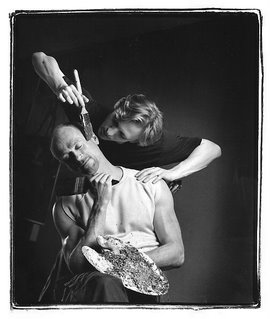
2. Installation artist Alan Storey has created a giant drawing machine that will react to a light on dancer Makaila Wallace's head. The device will track her movements and draw on a screen, at the end of the perfomance, the audience will be able to see it all on a giant screen. You can see Storey here by his Coopers Mews sculpture.

we listened to the dancers give us their side of the story. Not too long ago I asked National Ballet of Canada founding member, dancer and choreographer Grant Strate why it was that dancers in Vancouver seemed to be all so articulate. He told me that this was certainly not the rule. I then asked the master of ceremonies the same question. His answer was concise and an eye opener. "Ines Vancouver we don't have a hair bun and tutu tradition." From this I understood that dancers are not expected to just follow standard moves but must inject intelligence, individuality. They must think for themselves. It was a pleasure to listen to dancer Jones Henry (below) and James Gnam prove the master of ceremonies right.
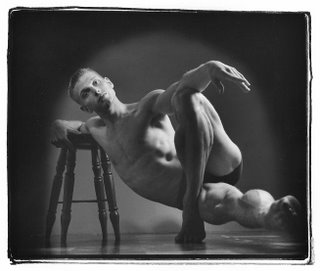
I remember the first few years of Ballet BC when John Alleyne took over. There were plenty of tutus and bun heads at the time. Then slowly, surely and quietly they all but disappeard. Today's Ballet BC or Modern Ballet BC (as I would like to call it) has to be John Alleyne's legacy and we should be grateful for it.
But four men for Four Seasons might get some competition from more womanly quarters. While I am not familiar with Mark Morris's A Garden I do recommend a/way inside by Dominique Dumais (below). Her work, in all its simplicity, might just give the four men above a run for their money. And of course not to mention all the girls (women) in the band including my favourite Arts Umbrella graduate, Alexis Fletcher.

The Four Seasons
at Queen Elizabeth Theatre
on February 14, 15, 16 @ 8 pm
& February 16 @ 2pm
Pensó que en la hora de la muerte no habría acabado aún de clasificar todos los recuerdos de la niñez.
He thought that in the hour of his death he would not have finished classifying the rembembrances of his childhood.
Funes El Memorioso
Jorge Luís Borges
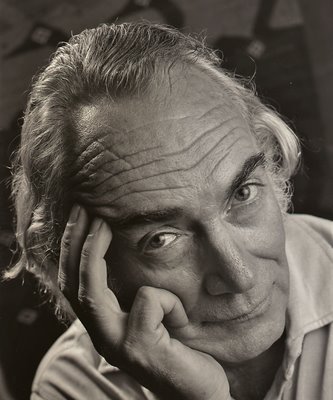
Memory and how it works is something I am constantly thinking about. I wonder how much of our shared life Rebecca will remember hence. I remember little of my life when I was 10.
I thought about this Saturday night when Rebecca was talking to cellist Colin Matthews after the performance of The Satchmo Suite at the Vancouver East Cultural Centre. I asked Rebecca, "How many strings does a cello have?" I was disheartened when she guessed 12. When Rebecca was 6 she could tell the difference beween cellos and similar looking violas da gamba. Rebecca would have stated unequivocally, "Violas da gamba have 5 or more strings and cellos 4." I suspect that memory is like a red carpet at the Academy Awards. As it is rolled out (new memory) the back of the carpet (old memory) is rolled in. Thus I don't hold much hope for her remembering much of what we do now.
Last week I went twice to a wonderful photographic exhibition at the Vancouver Art Gallery. I went home thinking about photography and photographers. I remember that I photographed at least two photographers in my lifetime. They were Annie Leibovitz and Elliott Erwitt. But I also remember taking portraits of an extremely interesting photographer in Lima, Perú in 1990. I was in Lima to photograph Mario Vargas Llosa and I have several more blogs on him but this one should be enough.
I remember little of the photographer or the circumstances that led me to meet him. My writer friend Mark Budgen with whom I traveled to Lima remembers that after I took my photographs of the man I had told him that he was an interesting photographer who liked to contemplate sundown in Paracas, Peru when he felt depressed. And that was it. Somehow I am sure that Mark called me some years later to tell me, "Your Peruvian photographer friend died."
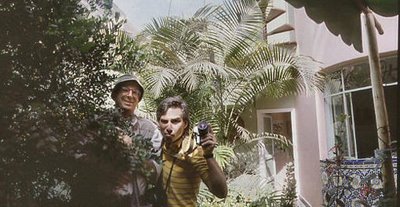
Trying to find the pictures of the photographer was tough as I had no memory of his name, Mark did not remember, and Google could not help me. I simply had no information on the man. Even trying to connect "Peruvian photographer, Paracas" gave me nothing. The only possible solution was for me to wade, through all my photo files (in alphabetical order) until I found him. That was daunting.
For yesterday's blog I had to scan a couple of CDs. One of them was of Pablo Casals. While scanning it I stared at the name Casals and became very excited. I ran down to my files and looked under C, under Casals and found : Casals, José - Perú - Photographer!
Here he is. Of José Casals all I have been able to find out is that he worked for Magnum and had several retrospective shows with other Peruvian photographers. I have not been able to determine when he died, where he was born or much else. A site lists one of his books here. Of the pictures listed on that site the one here (below,left) is the one that reproduced the best.
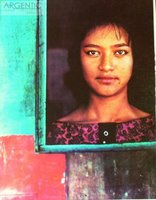
I wonder what the man was like? Why did he go to Paracas when he was depressed? What did he do for Magnum? I wonder what the man was like? My memory, my awful memory.
Of memory I have written before here and I cite Jim Byrnes as having a wonderful memory. I will ask him today as I will be in his kitchen taking his photograph. Just one more Borgesian labyrinth.

When I was 21, and in Mexico City I thought I was young and avant-garde. So I had a black girlfriend from from Chicago (Jewish,too) called Benjamin ("Call me Benjie"). She gave me a subscription to Downbeat and two Angel records. The records were J.S.Bach Suites for Cello performed by Pablo Casals.

In Vancouver in the 70s the records were never released as tapes. When CDs came around I eschewed the whole idea of having to scrap my records and tapes for them. But when I noticed that Angel (now EMI) re-released the Bach Suites as two CDs I promptly purchased them and waited a few years before I broke down to buy a CD player.
I never much appreciated Louis Armstrong. I grew up in the 50s and 60s and I thought Miles Davis was cool and Dizzie Gillespie (because of his attraction to Latin music) bearable. I could not appreciate Armstrong's loud trumpet. I preferred Davis's muted horn close to a microphone or Art Farmer's sweet and gentle approach. In 1970 when Rosemary and lived in a little apartment on Calle Estrasburgo in Mexico City's Zona Rosa I ran into Louis Armstrong on the street. The black man, who was to die the next year, was casually walking like a tourist and enjoying the sights. I was much too shy to talk to him.
Six or 7 years ago my eldest daughter gave me the Verve CD recording of Ella Fitzgerald and Louis Armstrong. It is the only Armstrong record I own and I have never played it much. In the mid 50s I bought at a service station a special jazz recording issued by Texaco in the US (I was in Austin) for $1.99. I remember distinctly that my favourite cut was Louis Armstrong (and trombonist J.C. Higginbotham) playing St. Louis Blues with a tango rythm. The record disappeared from my collection many years ago.
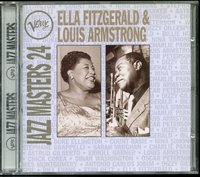
Last Wednesday Rosemary and I were enamoured and fascinated with the Vancouver East Cultural Centre's production of Hans Böggild and Doug Innis's The Satchmo Suite. It was so good that I brought Rebecca to see it Saturday night.
But I had to prepare Rebecca for it. On our way to a birthday party yesterday morning I played the Bach Suite No 1 in the car. Returning from the party I played my daughter Ale's CD of Louis Armstrong with Ella Fitzgerald.
The play is about a stuffed shirt black musician (Hubert Clements played by Andrew Moodie) who has a block for playing the suite. He must play it at a performance with a large orchestra and if he is unable to play it right he will lose his cello chair in the orchestra. Louis Armstrong's (Jeremiah Sparks) ghost walks through Clement's hotel bathroom mirror to rescue him.
There is a moment in the play where I laughed (there are many other moments to laugh) Hubert tells Louis, "Bach would have never played like that as he was never on a riverboat steamer." Armstrong replies, "Of course, they had not been invented yet." This brought to mind a slide in my files featuring a man whose name I never recorded holding a model steam boat in Kitsilano Beach.
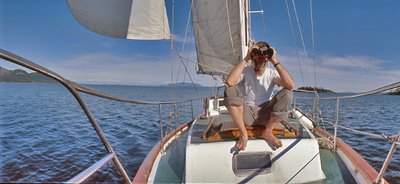
Returning from the performance we had more boats in our agenda. Rebecca and I watched the 1937 film Captains Courageous based on a story by Rudyard Kipling. I had not seen this film since I had seen it with my father as a child. It featured Freddie Bartholomew, Spencer Tracy, Lionel Barrymore, Melvin Douglas, Mickey Rooney and a terrific and young Jack Carradine.
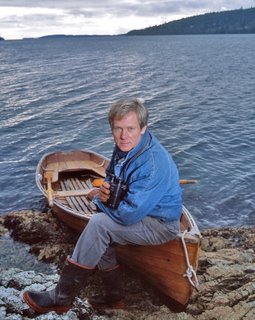
Unlike the film Rebecca and I watched the other day, A High Wind In Jamaica where children tame a crew of pirates in Captains Courageous, the crew of a Grand Banks fishing schooner turn the unlikeable Freddie Bartholomew into a man with skills. When Spencer Tracy is about to willingly drown (to save the ship) he tells Bartholomew:
Now listen to me, leetle feesh. I go now...We had good times together, eh, leetle feesh? We laugh. We sing. So you smile...Manuel - he be watching you. You be best fisherman ever lived.
I think that Rebecca (by then it was one in the morning) was shedding some tears and I realized we had had a wonderful day. Rebecca had had pleasant chats with actors Jeremiah Sparks, Andre Moodie and cellist Colin Matthews ("It is important Rebecca that you learn to read music.")after that night's performance.
I suddenly thought of men with boats. I photographed author and doctor Kevin Patterson (Journey At Sea) and Robert Bateman with boats. But I was always nervous about getting seasick. I always had Dramamine in my pocket.
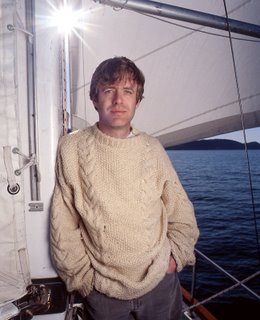 Perhaps men with boats were ancillary to my growing up. Will Rebecca have a more intimate relationship with boats? Or was Louis Armstrong and the We're Here schooner enough? And exactly what kind of music would Bach have composed on a river steamboat?
Perhaps men with boats were ancillary to my growing up. Will Rebecca have a more intimate relationship with boats? Or was Louis Armstrong and the We're Here schooner enough? And exactly what kind of music would Bach have composed on a river steamboat?
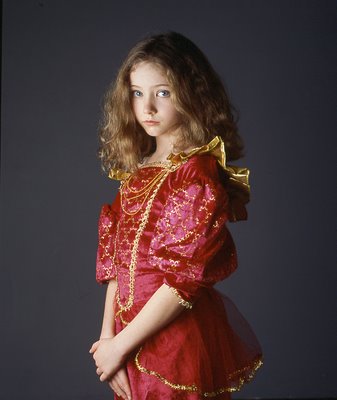
The beautiful blond boy hangs out from the window of a Tampico, Mexico house of ill repute to watch a cock fight. He leans too far and plummets to the ground. The pirates declare him dead. This is a scene from the equally beautiful film, the 1965 A High Wind In Jamaica directed by Alexander Mackendrick. Anthony Quinn plays a bumbling but human pirate and James Coburn is his lieutenant at his almost not quite villainous best. The children headed by the astounding child actress Deborah Baxter terrorize the pirates, almost, into submission. Martin Amis, the little boy on the book cover is the little boy who falls out of the window. Nobody who might have seen this fine English film in 1965 would have suspected any kind of career for the little boy concentrating their amazement on Deborah Baxter's acting prowess and screen presence. Of the film Amis writes in Experience:
I talentlessy played one of the children in Mackendrick's version of the Richard Hughes novel A High Wind In Jamaica...I played chess with my co-star, the consistently avuncular Anthony Quinn, and the divinely pretty daughter, Lisa Coburn- of my other co-star, genial James, was in love with me and followed me everywhere, even down into the deep end of the hotel on Runaway Bay. I loved her too but I wanted my moments of reprieve. She was seven. The film's central character was an extraordinary girl called Deborah Baxter, who played my younger sister. I had eyes (but no lips, no hands) for her older sister: Beverly Baxter.
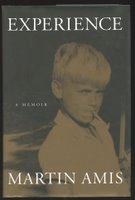
We saw the film last night. Even though it was our 40th wedding anniversary we had the two children with us. Bruce Stewart was away on a snow shoeing expedition in mail bonding and Hilary Stewart was out to see Juno with her mother-in-law. So we had a homemade pizza and watched A High Wind In Jamaica. Of Deborah Baxter's role as Emily, Rebecca used a word I taught her last week, "She is certainly a precocious child."
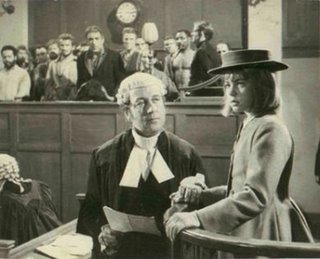
We discussed how this English film, unlike many American films, does not show the usual two extremes of humanity, the all good and the all bad. I explained that the protagonists were a mixture of good and bad and in most cases the good somehow trumped the bad. Rebecca was not able to understand the shock the children showed when they were safe again in England and the pirates were in the docket. "I would have told them that Anthony Quinn had not killed that Dutch captain and that..." Somehow the complexity of the problem made Rebecca not only miss her dad but when she called her mother Hilary she began to cry. As Rebecca had watched Lauren looking at the movie with a cool detachment I can surmise that she must have thought, "Enjoy being a child while you can. It will soon end."

I only hope that both Rebecca and Lauren can somehow grow up and smile and perhaps adjust as Emily must have in A High Wind In Jamaica or at the very least learn to smile like Deborah Baxter does now in this picture taken by photographer Howard Atherton. This is an anniversary I will not soon forget.
Adendum from email, February 12
Dear Alex
Of course I don't mind you writing about me, I feel honoured!
I am glad that A High Wind in Jamaica has not been forgotten! I forwarded your blog to the photographer of the picture, Howard, who in fact is a big cinematographer! He is a good friend of mine. I am pressing on with my career although it is much more difficult now!
Thank you again for your sweet words.
Bestest
Deborah
Deborah Baxter
Hope springs eternal in the human breast: Man never is, but always To be Blest.
Alexander Pope

As Rosemary and I walked up to our front door after a morning with the doctor (X-rays for me again, could it be that "ambulatory" pneumonia again?) I was hit by the fragrance. I wrote about it here last year. But the rush of pleasure was more intense. I thought I had lost, because of a cold, my sense of smell (taste, and I am deaf in one ear). This time around I thought of one of the most beautiful words in Spanish, esperanza which is Spanish for hope. While I have known some women called Hope, Esperanza is a much more frequent name in Spanish and I have known several Esperanzas, all lovely simply because of the mystique and the magical qualities of the name.
When Rebecca was indulging in much too much TV on Saturday (those twins that drive the black hotel manager crazy) I waited for the program to finish and brought her into the living room. I explained to her that we use some words so frequently that after a while we forget the often beautiful meaning behind the word. I gave as an example, breakfast (desayuno) and told her of the original religious meaning of the word. I am from a Roman Catholic generation that had to worry about not eating for at least 6 hours (a special dispensation of the 50s) before having Communion on a Christmas Eve midnight Mass when I was 9 or 10. From breakfast I pointed Rebecca to another word share and how much more beautiful share it in Spanish. The word compartir in Spanish (from the Latin) means to literally break bread with someone. Esperanza also comes from the Latin and it means to wait. Espera (and all those complicated Latin declentions) brings the idea of a woman who waits and that is why Esperanza is such a beautiful name for a woman. While many men get away with being called José María (Joseph Mary) in Spanish the use of Esperanza as an epicene name is not usual, alas!
That intense scent of Sarcococca gave me esperanza (certainly not the English version of hope) that spring is on its way and I am heading towards recovery. It made me think of so many more wonderful words, whose meanings just might enlighten Rebecca's mind.
----------------------------------------------------------------------------------------------------------------------------------
esperanza. (From the Dictionary of the Real Academia Española)
1. f. Estado del ánimo en el cual se nos presenta como posible lo que deseamos.
2. f. Mat. Valor medio de una variable aleatoria o de una distribución de probabilidad.
3. f. Rel. En la doctrina cristiana, virtud teologal por la que se espera que Dios dé los bienes que ha prometido.
~ de vida.
1. f. Tiempo medio que le queda por vivir a un individuo de una población biológica determinada. Para los recién nacidos coincide con la duración media de la vida en dicha población.
alimentarse alguien de ~s.
1. loc. verb. Esperar, con poco fundamento, que se conseguirá lo deseado o pretendido.
dar ~, o ~s, a alguien.
1. locs. verbs. Darle a entender que puede lograr lo que solicita o desea.
llenar algo la ~.
1. loc. verb. Corresponder el efecto o suceso a lo que se esperaba.
qué ~s.
1. loc. interj. Cuba, Méx. y Ven. U. para indicar la improbabilidad de que se logre o suceda algo.
□ V.

Last night VLM Editor/Art Director Bob Mercer and I went to Ballet BC's Studio Series. In these events held at the Scotia Bank Dance Centre you get the privileged view of watching a work in progress (John Alleyne's The Four Seasons) unfold and then have the promise of seeing the work performed complete, in this case, in two days on Thursday when The Four Seasons open at the Queen Elizabeth Theatre.
The studio space is smaller and the intimacy created lends itself to making the audience feel as if they are watching the dancers under a loupe. We were sitting next to a Ballet BC fan with long tenure. It was architect Henry Hawthorn so our ballet experience was enhanced by his good company. The master of ceremonies deftly made John Alleyne drop his candid drawers so that we were able to understand how he manages a work in progress. In spite of the smiles I suspect this is serious and scary. For Alleyne, I believe, a work is not really finished until perhaps seconds before its premiere.
After watching a shortened version (but not shortened enough that we could not but notice the dancers gasping for air!) of the Four Seasona while having to leave to the imagination a couple of the promised features:
1. Artist Tiko Kerr will be painting works (sets?) during the performance of the Four Seasons on stage in an extemporaneus reaction to the action on stage. He is seen here being painted with his own paint brush by my favourite ever Ballet BC male dancer, Miroslav Zydowicz.

2. Installation artist Alan Storey has created a giant drawing machine that will react to a light on dancer Makaila Wallace's head. The device will track her movements and draw on a screen, at the end of the perfomance, the audience will be able to see it all on a giant screen. You can see Storey here by his Coopers Mews sculpture.

we listened to the dancers give us their side of the story. Not too long ago I asked National Ballet of Canada founding member, dancer and choreographer Grant Strate why it was that dancers in Vancouver seemed to be all so articulate. He told me that this was certainly not the rule. I then asked the master of ceremonies the same question. His answer was concise and an eye opener. "Ines Vancouver we don't have a hair bun and tutu tradition." From this I understood that dancers are not expected to just follow standard moves but must inject intelligence, individuality. They must think for themselves. It was a pleasure to listen to dancer Jones Henry (below) and James Gnam prove the master of ceremonies right.

I remember the first few years of Ballet BC when John Alleyne took over. There were plenty of tutus and bun heads at the time. Then slowly, surely and quietly they all but disappeard. Today's Ballet BC or Modern Ballet BC (as I would like to call it) has to be John Alleyne's legacy and we should be grateful for it.
But four men for Four Seasons might get some competition from more womanly quarters. While I am not familiar with Mark Morris's A Garden I do recommend a/way inside by Dominique Dumais (below). Her work, in all its simplicity, might just give the four men above a run for their money. And of course not to mention all the girls (women) in the band including my favourite Arts Umbrella graduate, Alexis Fletcher.

The Four Seasons
at Queen Elizabeth Theatre
on February 14, 15, 16 @ 8 pm
& February 16 @ 2pm
José Casals - Of Memory Lost, Gained & Lost Again
Monday, February 11, 2008
Pensó que en la hora de la muerte no habría acabado aún de clasificar todos los recuerdos de la niñez.
He thought that in the hour of his death he would not have finished classifying the rembembrances of his childhood.
Funes El Memorioso
Jorge Luís Borges

Memory and how it works is something I am constantly thinking about. I wonder how much of our shared life Rebecca will remember hence. I remember little of my life when I was 10.
I thought about this Saturday night when Rebecca was talking to cellist Colin Matthews after the performance of The Satchmo Suite at the Vancouver East Cultural Centre. I asked Rebecca, "How many strings does a cello have?" I was disheartened when she guessed 12. When Rebecca was 6 she could tell the difference beween cellos and similar looking violas da gamba. Rebecca would have stated unequivocally, "Violas da gamba have 5 or more strings and cellos 4." I suspect that memory is like a red carpet at the Academy Awards. As it is rolled out (new memory) the back of the carpet (old memory) is rolled in. Thus I don't hold much hope for her remembering much of what we do now.
Last week I went twice to a wonderful photographic exhibition at the Vancouver Art Gallery. I went home thinking about photography and photographers. I remember that I photographed at least two photographers in my lifetime. They were Annie Leibovitz and Elliott Erwitt. But I also remember taking portraits of an extremely interesting photographer in Lima, Perú in 1990. I was in Lima to photograph Mario Vargas Llosa and I have several more blogs on him but this one should be enough.
I remember little of the photographer or the circumstances that led me to meet him. My writer friend Mark Budgen with whom I traveled to Lima remembers that after I took my photographs of the man I had told him that he was an interesting photographer who liked to contemplate sundown in Paracas, Peru when he felt depressed. And that was it. Somehow I am sure that Mark called me some years later to tell me, "Your Peruvian photographer friend died."

Trying to find the pictures of the photographer was tough as I had no memory of his name, Mark did not remember, and Google could not help me. I simply had no information on the man. Even trying to connect "Peruvian photographer, Paracas" gave me nothing. The only possible solution was for me to wade, through all my photo files (in alphabetical order) until I found him. That was daunting.
For yesterday's blog I had to scan a couple of CDs. One of them was of Pablo Casals. While scanning it I stared at the name Casals and became very excited. I ran down to my files and looked under C, under Casals and found : Casals, José - Perú - Photographer!
Here he is. Of José Casals all I have been able to find out is that he worked for Magnum and had several retrospective shows with other Peruvian photographers. I have not been able to determine when he died, where he was born or much else. A site lists one of his books here. Of the pictures listed on that site the one here (below,left) is the one that reproduced the best.

I wonder what the man was like? Why did he go to Paracas when he was depressed? What did he do for Magnum? I wonder what the man was like? My memory, my awful memory.
Of memory I have written before here and I cite Jim Byrnes as having a wonderful memory. I will ask him today as I will be in his kitchen taking his photograph. Just one more Borgesian labyrinth.
Louis Armstrong, Bach's River Boat, Robert Bateman, Kevin Patterson - Captains Courageous
Sunday, February 10, 2008

When I was 21, and in Mexico City I thought I was young and avant-garde. So I had a black girlfriend from from Chicago (Jewish,too) called Benjamin ("Call me Benjie"). She gave me a subscription to Downbeat and two Angel records. The records were J.S.Bach Suites for Cello performed by Pablo Casals.

In Vancouver in the 70s the records were never released as tapes. When CDs came around I eschewed the whole idea of having to scrap my records and tapes for them. But when I noticed that Angel (now EMI) re-released the Bach Suites as two CDs I promptly purchased them and waited a few years before I broke down to buy a CD player.
I never much appreciated Louis Armstrong. I grew up in the 50s and 60s and I thought Miles Davis was cool and Dizzie Gillespie (because of his attraction to Latin music) bearable. I could not appreciate Armstrong's loud trumpet. I preferred Davis's muted horn close to a microphone or Art Farmer's sweet and gentle approach. In 1970 when Rosemary and lived in a little apartment on Calle Estrasburgo in Mexico City's Zona Rosa I ran into Louis Armstrong on the street. The black man, who was to die the next year, was casually walking like a tourist and enjoying the sights. I was much too shy to talk to him.
Six or 7 years ago my eldest daughter gave me the Verve CD recording of Ella Fitzgerald and Louis Armstrong. It is the only Armstrong record I own and I have never played it much. In the mid 50s I bought at a service station a special jazz recording issued by Texaco in the US (I was in Austin) for $1.99. I remember distinctly that my favourite cut was Louis Armstrong (and trombonist J.C. Higginbotham) playing St. Louis Blues with a tango rythm. The record disappeared from my collection many years ago.

Last Wednesday Rosemary and I were enamoured and fascinated with the Vancouver East Cultural Centre's production of Hans Böggild and Doug Innis's The Satchmo Suite. It was so good that I brought Rebecca to see it Saturday night.
But I had to prepare Rebecca for it. On our way to a birthday party yesterday morning I played the Bach Suite No 1 in the car. Returning from the party I played my daughter Ale's CD of Louis Armstrong with Ella Fitzgerald.
The play is about a stuffed shirt black musician (Hubert Clements played by Andrew Moodie) who has a block for playing the suite. He must play it at a performance with a large orchestra and if he is unable to play it right he will lose his cello chair in the orchestra. Louis Armstrong's (Jeremiah Sparks) ghost walks through Clement's hotel bathroom mirror to rescue him.
There is a moment in the play where I laughed (there are many other moments to laugh) Hubert tells Louis, "Bach would have never played like that as he was never on a riverboat steamer." Armstrong replies, "Of course, they had not been invented yet." This brought to mind a slide in my files featuring a man whose name I never recorded holding a model steam boat in Kitsilano Beach.

Returning from the performance we had more boats in our agenda. Rebecca and I watched the 1937 film Captains Courageous based on a story by Rudyard Kipling. I had not seen this film since I had seen it with my father as a child. It featured Freddie Bartholomew, Spencer Tracy, Lionel Barrymore, Melvin Douglas, Mickey Rooney and a terrific and young Jack Carradine.

Unlike the film Rebecca and I watched the other day, A High Wind In Jamaica where children tame a crew of pirates in Captains Courageous, the crew of a Grand Banks fishing schooner turn the unlikeable Freddie Bartholomew into a man with skills. When Spencer Tracy is about to willingly drown (to save the ship) he tells Bartholomew:
Now listen to me, leetle feesh. I go now...We had good times together, eh, leetle feesh? We laugh. We sing. So you smile...Manuel - he be watching you. You be best fisherman ever lived.
I think that Rebecca (by then it was one in the morning) was shedding some tears and I realized we had had a wonderful day. Rebecca had had pleasant chats with actors Jeremiah Sparks, Andre Moodie and cellist Colin Matthews ("It is important Rebecca that you learn to read music.")after that night's performance.
I suddenly thought of men with boats. I photographed author and doctor Kevin Patterson (Journey At Sea) and Robert Bateman with boats. But I was always nervous about getting seasick. I always had Dramamine in my pocket.
 Perhaps men with boats were ancillary to my growing up. Will Rebecca have a more intimate relationship with boats? Or was Louis Armstrong and the We're Here schooner enough? And exactly what kind of music would Bach have composed on a river steamboat?
Perhaps men with boats were ancillary to my growing up. Will Rebecca have a more intimate relationship with boats? Or was Louis Armstrong and the We're Here schooner enough? And exactly what kind of music would Bach have composed on a river steamboat?
Deborah Baxter Smiles, Martin Amis Falls & Rebecca Cries
Friday, February 08, 2008

The beautiful blond boy hangs out from the window of a Tampico, Mexico house of ill repute to watch a cock fight. He leans too far and plummets to the ground. The pirates declare him dead. This is a scene from the equally beautiful film, the 1965 A High Wind In Jamaica directed by Alexander Mackendrick. Anthony Quinn plays a bumbling but human pirate and James Coburn is his lieutenant at his almost not quite villainous best. The children headed by the astounding child actress Deborah Baxter terrorize the pirates, almost, into submission. Martin Amis, the little boy on the book cover is the little boy who falls out of the window. Nobody who might have seen this fine English film in 1965 would have suspected any kind of career for the little boy concentrating their amazement on Deborah Baxter's acting prowess and screen presence. Of the film Amis writes in Experience:
I talentlessy played one of the children in Mackendrick's version of the Richard Hughes novel A High Wind In Jamaica...I played chess with my co-star, the consistently avuncular Anthony Quinn, and the divinely pretty daughter, Lisa Coburn- of my other co-star, genial James, was in love with me and followed me everywhere, even down into the deep end of the hotel on Runaway Bay. I loved her too but I wanted my moments of reprieve. She was seven. The film's central character was an extraordinary girl called Deborah Baxter, who played my younger sister. I had eyes (but no lips, no hands) for her older sister: Beverly Baxter.

We saw the film last night. Even though it was our 40th wedding anniversary we had the two children with us. Bruce Stewart was away on a snow shoeing expedition in mail bonding and Hilary Stewart was out to see Juno with her mother-in-law. So we had a homemade pizza and watched A High Wind In Jamaica. Of Deborah Baxter's role as Emily, Rebecca used a word I taught her last week, "She is certainly a precocious child."

We discussed how this English film, unlike many American films, does not show the usual two extremes of humanity, the all good and the all bad. I explained that the protagonists were a mixture of good and bad and in most cases the good somehow trumped the bad. Rebecca was not able to understand the shock the children showed when they were safe again in England and the pirates were in the docket. "I would have told them that Anthony Quinn had not killed that Dutch captain and that..." Somehow the complexity of the problem made Rebecca not only miss her dad but when she called her mother Hilary she began to cry. As Rebecca had watched Lauren looking at the movie with a cool detachment I can surmise that she must have thought, "Enjoy being a child while you can. It will soon end."

I only hope that both Rebecca and Lauren can somehow grow up and smile and perhaps adjust as Emily must have in A High Wind In Jamaica or at the very least learn to smile like Deborah Baxter does now in this picture taken by photographer Howard Atherton. This is an anniversary I will not soon forget.
Adendum from email, February 12
Dear Alex
Of course I don't mind you writing about me, I feel honoured!
I am glad that A High Wind in Jamaica has not been forgotten! I forwarded your blog to the photographer of the picture, Howard, who in fact is a big cinematographer! He is a good friend of mine. I am pressing on with my career although it is much more difficult now!
Thank you again for your sweet words.
Bestest
Deborah
Deborah Baxter
Hope springs eternal in the human breast: Man never is, but always To be Blest.
Alexander Pope

As Rosemary and I walked up to our front door after a morning with the doctor (X-rays for me again, could it be that "ambulatory" pneumonia again?) I was hit by the fragrance. I wrote about it here last year. But the rush of pleasure was more intense. I thought I had lost, because of a cold, my sense of smell (taste, and I am deaf in one ear). This time around I thought of one of the most beautiful words in Spanish, esperanza which is Spanish for hope. While I have known some women called Hope, Esperanza is a much more frequent name in Spanish and I have known several Esperanzas, all lovely simply because of the mystique and the magical qualities of the name.
When Rebecca was indulging in much too much TV on Saturday (those twins that drive the black hotel manager crazy) I waited for the program to finish and brought her into the living room. I explained to her that we use some words so frequently that after a while we forget the often beautiful meaning behind the word. I gave as an example, breakfast (desayuno) and told her of the original religious meaning of the word. I am from a Roman Catholic generation that had to worry about not eating for at least 6 hours (a special dispensation of the 50s) before having Communion on a Christmas Eve midnight Mass when I was 9 or 10. From breakfast I pointed Rebecca to another word share and how much more beautiful share it in Spanish. The word compartir in Spanish (from the Latin) means to literally break bread with someone. Esperanza also comes from the Latin and it means to wait. Espera (and all those complicated Latin declentions) brings the idea of a woman who waits and that is why Esperanza is such a beautiful name for a woman. While many men get away with being called José María (Joseph Mary) in Spanish the use of Esperanza as an epicene name is not usual, alas!
That intense scent of Sarcococca gave me esperanza (certainly not the English version of hope) that spring is on its way and I am heading towards recovery. It made me think of so many more wonderful words, whose meanings just might enlighten Rebecca's mind.
----------------------------------------------------------------------------------------------------------------------------------
esperanza. (From the Dictionary of the Real Academia Española)
1. f. Estado del ánimo en el cual se nos presenta como posible lo que deseamos.
2. f. Mat. Valor medio de una variable aleatoria o de una distribución de probabilidad.
3. f. Rel. En la doctrina cristiana, virtud teologal por la que se espera que Dios dé los bienes que ha prometido.
~ de vida.
1. f. Tiempo medio que le queda por vivir a un individuo de una población biológica determinada. Para los recién nacidos coincide con la duración media de la vida en dicha población.
alimentarse alguien de ~s.
1. loc. verb. Esperar, con poco fundamento, que se conseguirá lo deseado o pretendido.
dar ~, o ~s, a alguien.
1. locs. verbs. Darle a entender que puede lograr lo que solicita o desea.
llenar algo la ~.
1. loc. verb. Corresponder el efecto o suceso a lo que se esperaba.
qué ~s.
1. loc. interj. Cuba, Méx. y Ven. U. para indicar la improbabilidad de que se logre o suceda algo.
□ V.
Thursday, February 07, 2008
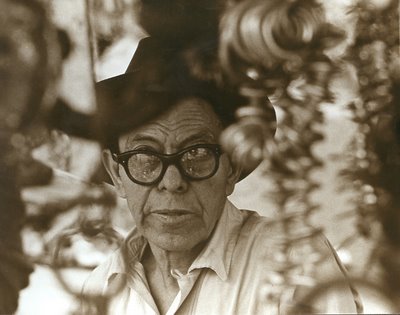
Today and yesterday I went to see a collection of photographs at the Vancouver Art Gallery that are from the George Eastman House in Rochester, New York. The photographs encompass the period called pictorialism which spanned the 19th and the beginning of the 20th century.
Every time I see a show like this I grieve that I rarely go out to take pictures for fun, outside of the ones I take of my granddaughters. The Spanish saying, the title of today's blog says, "Eyes that don't see, heart that doesn't feel." Is that what is happening to me? I am taking some pictures today of a model friend called Jo-Ann. I feel melancholy, perhaps the lingering cold, perhaps the bleak weather. I will try to keep my eyes open and I will hope to feel a bit more again.
The picture here I took half a century ago in the Lagunilla market in Mexico City. The camera was a Pentacon F with a Steinheil 135mm lens.

Today and yesterday I went to see a collection of photographs at the Vancouver Art Gallery that are from the George Eastman House in Rochester, New York. The photographs encompass the period called pictorialism which spanned the 19th and the beginning of the 20th century.
Every time I see a show like this I grieve that I rarely go out to take pictures for fun, outside of the ones I take of my granddaughters. The Spanish saying, the title of today's blog says, "Eyes that don't see, heart that doesn't feel." Is that what is happening to me? I am taking some pictures today of a model friend called Jo-Ann. I feel melancholy, perhaps the lingering cold, perhaps the bleak weather. I will try to keep my eyes open and I will hope to feel a bit more again.
The picture here I took half a century ago in the Lagunilla market in Mexico City. The camera was a Pentacon F with a Steinheil 135mm lens.
Wednesday, February 06, 2008
Finn Slough, Richmond, British Columbia
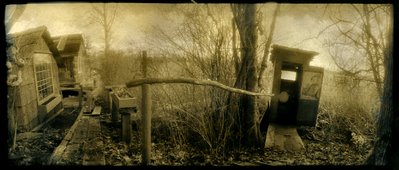
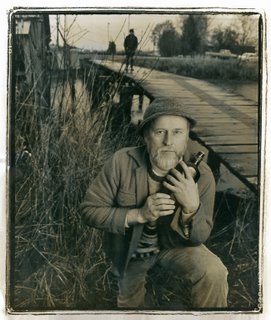
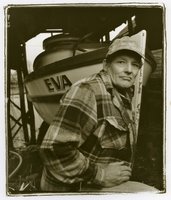
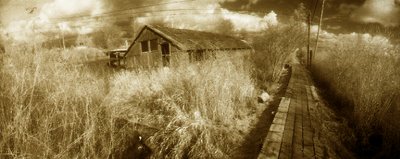
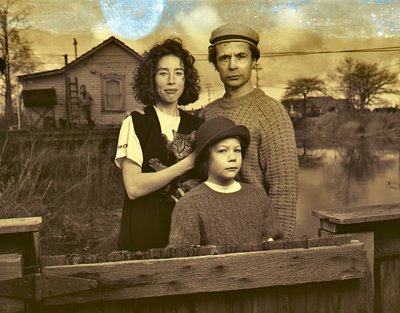
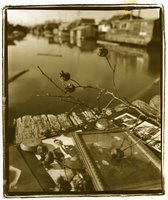
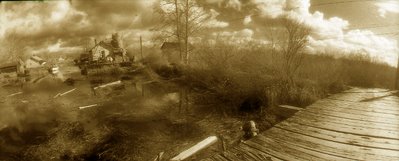
"On the count of 10 this man will die."
A man falls in the water, he struggles as Max Von Sydow calmy counts down, 10, 9, 8... Europa a 1991 film directed by Lars Von Tier.
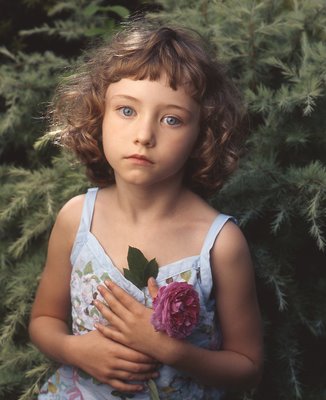
Last Saturday Rebecca asked me from the living room, "Papi, what's a posthumous portrait?"
It had all begun when she had told me that she really did not believe in my idea that if we returned to a place where one of our loved ones (or even unknowns) had walked by we would in some way walk through their presence in some form of ghostly spirit. I had told her about Homero Aridjis who wrote:
Invisible ancestors
walk with us
through the back streets
car-noises
the stares of children
young girls's bodies
cross through them
Weightless and vague
we travel through them
at doorways that no longer are
on bridges that are empty
with the sun on our faces
we too
move toward transparency. Homero Aridjis - Letter From Mexico
I have taken Rebecca to the old CP train station at the foot of Seymour Street. We sat down once, on one of the benches and I recounted how my grandmother had told me when I was 8 or 9 in Buenos Aires that she had left Manila in 1920, a penniless widow, with her three children, to live in the Bronx. She told me they had disembarked from a Japanese ship in a magical place that had enormous conifers and snow capped mountains, that was called Vancouver. She told me they had walked into a cavernous train station (the CP Station) to take a train to Montreal and from there to New York City. We looked up to the high celings and I explained that we did not need much of an imagination to see the four of them walking with their bags to the train platform. If we got up we could even, perhaps walk right through them as Aridjis wrote in his poem. If one could still hear the sound of the Big Bang, I explained it was no less likely that the presence of a human being would have been diluted to nothing.
Obviously Rebecca had been giving much thought to the idea of spirits. She thinks that one of her friends from school, who lives across the street from the cemetery on 41st and Fraser, is a tad too religious. She has told me this and I have recommended that she show tolerance.
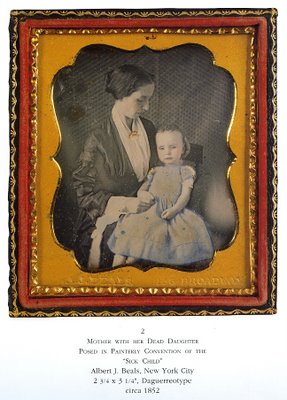
On Saturdays, Rebecca likes to go through my many photography and picture books. Her favourite is George Hurrell's very big book, Hollywood. But this time I placed on her lap Sleeping Beauty - Memorial Photography in America by Stanley B. Burns, M.D. (Twelvetrees Press, 1990). It didn't take long before she asked me about the pictures. "They are mostly portraits of dead children," I answered and then explained that because of a high mortality rate in children in the 19th century it was fashionable to have portraits taken of one's dead children. In some cases these portraits were the only tangible token or proof of their short existence. Rebecca looked at the book over and over. I mentiones that as soon as photography was invented and lenses and photographic emulsions became fast enough to record fleeting moments, photographers tried to capture the transition from life into death but that nobody had ever succeeded. Whatever it was that made eyes look alive, or dead in the portraits, had something to do with the existence of some invisible but somehow palpable spirit. She protested, "These pictures don't look real." "They were originally b+w photographs or silvery Daguerreotypes that were then coloured by hand," I explained, "That's why they look unreal. Colour photography had yet to be invented." This made Rebecca silent and when her mother Hilary arrived for supper in the evening she immediately sat down with her and showed her the book. I wonder which book will be on her lap next Saturday?
The colour photograph of Rebecca here I took in 2004. She is posing with the English Rose, R. 'William Shakespeare'. When I look at it I can see (in spite of the fact that it is in colour) something of the very much alive Alice Liddell that the Reverend Dogson captured in the 19th century. Is there something of that Rebecca of 2004 still in her now? Do spirits thin out?
Finn Slough, Richmond, British Columbia







Sleeping Beauty & Rebecca Snubs Spirits
Tuesday, February 05, 2008
"On the count of 10 this man will die."
A man falls in the water, he struggles as Max Von Sydow calmy counts down, 10, 9, 8... Europa a 1991 film directed by Lars Von Tier.

Last Saturday Rebecca asked me from the living room, "Papi, what's a posthumous portrait?"
It had all begun when she had told me that she really did not believe in my idea that if we returned to a place where one of our loved ones (or even unknowns) had walked by we would in some way walk through their presence in some form of ghostly spirit. I had told her about Homero Aridjis who wrote:
Invisible ancestors
walk with us
through the back streets
car-noises
the stares of children
young girls's bodies
cross through them
Weightless and vague
we travel through them
at doorways that no longer are
on bridges that are empty
with the sun on our faces
we too
move toward transparency. Homero Aridjis - Letter From Mexico
I have taken Rebecca to the old CP train station at the foot of Seymour Street. We sat down once, on one of the benches and I recounted how my grandmother had told me when I was 8 or 9 in Buenos Aires that she had left Manila in 1920, a penniless widow, with her three children, to live in the Bronx. She told me they had disembarked from a Japanese ship in a magical place that had enormous conifers and snow capped mountains, that was called Vancouver. She told me they had walked into a cavernous train station (the CP Station) to take a train to Montreal and from there to New York City. We looked up to the high celings and I explained that we did not need much of an imagination to see the four of them walking with their bags to the train platform. If we got up we could even, perhaps walk right through them as Aridjis wrote in his poem. If one could still hear the sound of the Big Bang, I explained it was no less likely that the presence of a human being would have been diluted to nothing.
Obviously Rebecca had been giving much thought to the idea of spirits. She thinks that one of her friends from school, who lives across the street from the cemetery on 41st and Fraser, is a tad too religious. She has told me this and I have recommended that she show tolerance.

On Saturdays, Rebecca likes to go through my many photography and picture books. Her favourite is George Hurrell's very big book, Hollywood. But this time I placed on her lap Sleeping Beauty - Memorial Photography in America by Stanley B. Burns, M.D. (Twelvetrees Press, 1990). It didn't take long before she asked me about the pictures. "They are mostly portraits of dead children," I answered and then explained that because of a high mortality rate in children in the 19th century it was fashionable to have portraits taken of one's dead children. In some cases these portraits were the only tangible token or proof of their short existence. Rebecca looked at the book over and over. I mentiones that as soon as photography was invented and lenses and photographic emulsions became fast enough to record fleeting moments, photographers tried to capture the transition from life into death but that nobody had ever succeeded. Whatever it was that made eyes look alive, or dead in the portraits, had something to do with the existence of some invisible but somehow palpable spirit. She protested, "These pictures don't look real." "They were originally b+w photographs or silvery Daguerreotypes that were then coloured by hand," I explained, "That's why they look unreal. Colour photography had yet to be invented." This made Rebecca silent and when her mother Hilary arrived for supper in the evening she immediately sat down with her and showed her the book. I wonder which book will be on her lap next Saturday?
The colour photograph of Rebecca here I took in 2004. She is posing with the English Rose, R. 'William Shakespeare'. When I look at it I can see (in spite of the fact that it is in colour) something of the very much alive Alice Liddell that the Reverend Dogson captured in the 19th century. Is there something of that Rebecca of 2004 still in her now? Do spirits thin out?
Monday, February 04, 2008
Sunday night I watched the 1998 Mexican film La Otra Conquista by director/writer Salvador Carrasco. It was in Spanish, the flowery Spanish of the 16th century and in Náhuatl the language spoken by the Mexican peoples of the State of Mexico. Náhuatl would be almost the same as the language of the ancient Aztecs.
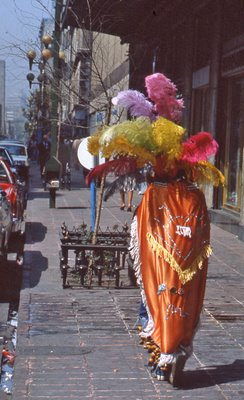
I was forced to see the film almost as if it were a silent film in that I had to guess such obvious lines like, "The gods have abandoned us!" and some that were more complex that somehow I had perhaps grasped because of my Catholic upbringing and my 15 year stay in several parts of Mexico before I moved to Vancouver. When it became quite violent Rosemary abandoned me and I felt a profound sense of loss in not being able to share the magnificence of this film with anyone that I might know.
The film brought to mind two wonderful novels on the conquest of Mexico. The first by Spanish novelist and statesman Salvador de Madariaga, was published in 1942. In Spanish it is called El Corazón de Piedra Verde and in English it was published as The Heart of Jade. Unless you read (with a very Spanish point of view) Bernal Díaz del Castillo's (he was a soldier who fought with Hernán Cortés) Historia Verdadera de la Conquista de la Nueva España, your only readily available source of information on the conquest of Spain was Madariaga's Heart of Jade or the swashbuckling but extremely innacurate 1948 Hollywood film, Captains from Castile with Tyrone Power and Jean Peters. Cesar Romero played Cortés in an early prequel to his Joker.
In 1991 the situation was brought to some balance by Mexican writer Homero Aridjis who published Memorias del Nuevo Mundo which reads sort of like a conquest of Mexico with large dabs of magic realism. This superb novel (one of my favourites ever) has only been translated into French.
Few in North America will understand the difference between Columbus Day (even 50 years ago) with the Latin American Día de la Raza which translates to the Day of our Race, infering the mixing of the Spanish with Indian blood to form a new mestizo race. Few monuments to Christopher Columbus leave out the presence of the Indian. The one in Mexico City is extremely elaborate. And yet as my mother used to point out there was not one street or avenue in Mexico City named after the conquistador Hernán Cortés.
It was in the early 1950s that Mexican Bantamweight champion, Raúl "Ratón (mouse)" Macias began to talk about the colour of his skin being bronze. He advertised a Mexican imitation of Coke called Mexicola. You could sense that there was a beginning source of pride about being of native origins. At the time many women refused to shave their legs since Mexican peoples had little body hair. Men of humble origins tried to grow moustaches. In the late 60s Mexico City passed an ordinance prohibiting its police officers from growing moustaches. The hair on their legs or those minute moustaches proved that, no matter how dark their skin was they had glorious Spanish blood! By eliminating the moustache the police department wanted to eliminate racism within its ranks. I often wonder if Frida Kahlo's moustache was less protofeminist protest and more an assertion of her European roots.
In Argentina the racial barrier between the lighter skinned Argentines with the darker aboriginals can be clearly seen by the not endearing but deprecating term "cabecitas negras" or "little black haired heads" to denote those of local ethnic background. Argentine rugby and polo teams have always managed to keep the colour light skinned either through the money needed to participate or simply by first having to be members of exclusive sports clubs. One of the few avenues for economic advancement for those cabecitas negras are the football teams. Only when Maradona (an obvious cabecita) was famous all over the world did he become almost accepted in his country by the upper crusts. And when he went on his drug bust shenanigans the excuse that he was a common cabecita was raised.
Many of my family are wealthy and live in barrios cerrados or "walled neighbourhoods. I asked one of my relatives, recently, what he would do if some day (I would believe soon) people of the other classes decided to climb the walls. He went into a closet and pulled out an Itaka sawed off shotgun (generally used by police assault squads), a Luftwaffe issue Luger pistol and an Argentine version of the Colt .45 automatic. He then told me, "I would target practice."
Racial prejudice was just as rampant in Mexico when I married Rosemary 40 years ago. I told a Mexican friend (educated in Switzerland) that I was getting married. He inquired (in as indirect a manner as he could) what Rosemary was like. I mentioned that she was Canadian and blonde. My friend said with obvious relief, "Gracias a Dios, vas a mejorar la raza." It translates to, "Thank God you are going to better the race (by helping to make it lighter skinned)." When children are born the first question asked is usually answered, "Blanquito," or "the little one is sort of light skinned." On the other hand the ignorance on race goes both ways. My soon to be mother-in-law dispatched Rosemary's sister Ruth to Mexico to ascertain what caliber of civilization I had reached and if I ate with a fork and knife.
I did not learn to swim well until I came to Canada 37 years ago. I did not know how to play tennis either. In Mexico and in Argentina you would learn to swim and play such elitist sport like tennis in clubs. The entry fees were horrendous. That is why so many Argentine tennis champions are so light skinned. My mother would have never taken me to a municipal swimming pool in either Buenos Aires or Mexic City. How could I possibly mix with the lower classes!
My godmother in Buenos Aires cannot believe that Rebecca's father drives buses for Trans Link. ""¡No te creo, che!" (I don't believe you!) she says. Argentina pretty well has the two-tier health system our Canadian National conservative party and our BC Liberals want to establish here.
My friend Juan Manuel Sanchez, the Argentine painter who now lives in Buenos Aires recently fell. He is 76 so it is serious. I asked him what he did. He told me he paid $100 pesos (about $200 Canadian) to go to the hospital for treatment. "I didn't want to wait with the rest," he told me. He did not have to elaborate. I understood.
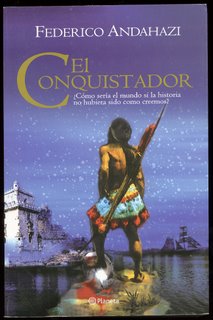
I wrote about "what if" novels here and of a particular one that has some bearing to today's blog here.
When Quetza the protagonist of the novel lands in his Mexica made ship near the Spanish town of Huelva (before Columbus was to sail in the opposite direction) relates (my translation of the text) in Federico Andhahazi's El Conquistador :
Upon landing Quetza ordered his men to wear their war clothing. They wore breastplates, wide rings around their arms, animal shaped masks and in hand they had their obsidian swords.
Quetza was euphoric to find out that the new lands contained men. He made a sign with his arm to the young man (a shepherd). He wanted to catch up to him to introduce himself. For an instant they stared at each other, transfixed. They were about the same age with the same expression of surprise on their face. Qutza stopped to notice the pale skin and the strange hair with light coloured curls. In spite of the young man's wooden staff he looked harmless. The Mexica captain began in his language, "I am Quetza. I come in my king's name, the emperor of Tenochtitlan. As of now you are his subject..." But before he could finish, the young man ran away as fast as he could until he disappeared at the end of the path. Quetza ordered his men to advance in the same direction to make him understand that he had no reason to fear them.
From the above you might suspect that the discovery of the old world by the new was not going to be any different from Columbus's, but you will have to wait for the English translation of this novel as I don't plan to spoil the ending.
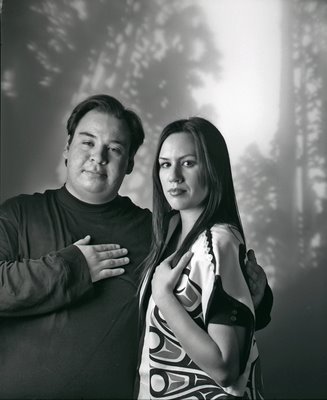
There we were (yesterday afternoon) inside Christ Church Cathedral. Upon entering it Rebecca had said, "While this may be Vancouver's nicest church I think the old churches in Mexico are nicer." We sat down to listen to a performance of Bruce Ruddell's Oratorio, The Spirit of Haida Gwaii with text by Bill Reid. Rebecca understood it had all to do with the story behind Reid's sculpture at Vancouver International Airport and the image on our $20 bills. I was not going to make it more complex to point out that the first Spirit of Haida Gwaii was esconced in Arthur Erickson's Canadian Embassy in Washington, DC.
Out of the blue, she asked me, "Who is your favourite bob sled team to win the 2010 Winter Olympic Games in Vancouver? Mine is the Jamaican team." Then she added, "The Swiss team is number 2." At this point the handsome gentleman sitting next to Rebecca interjected, "The Swiss invented the game. I am Swiss." Rebecca looked in his direction and asked him, "Do you speak French? Do you speak German? Do you speak Italian?" The man answered positively to the first two and then said, "I don't speak Italian, I speak Romantsch."
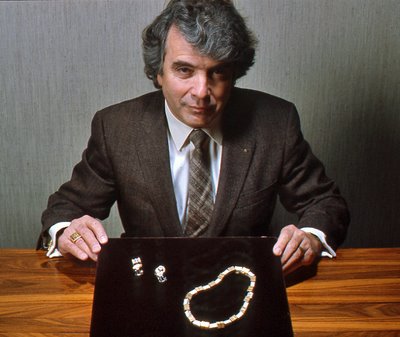
The whole thing had begun when we sat down and I noticed Toni Cavelti and his wife. "I want you to meet "the jeweler," I had told Rebecca."
We had a specially nice time as we were sitting behind timpani player Carol Pelkner. Ruddell's Oratorio had many juicy timpani parts and we delighted in Pelkner's performance. The music had some overtones of Benjamin Britten's Young Person's Guide to the Orchestra and Karl Jenkins Palladio. This meant that it was accessible not only to my ears but to Rebecca. She has seen baroque singers before so the excellent performance by bariton Clarence Logan and soprano Melody Mercredi was something she could enjoy while taking in Mercredi's beautiful red silk, bias-cut dress (by Dorothy Grant) with a drop shoulder and a slit to show off Mercredi's legs. When the performance was over we went into the back to talk to Logan and Mercredi. When I asked what was next, Mercredi surprised us by telling us she was going to be performing in the Vancouver Opera's performance of Beethoven's Fidelio startint on March 28. Immediately Rebecca asked, "When was Beethoven born?" As we left we ran into violinist Cam Wilson who told us, "I love playing here. The acoustics are wonderful."What are acoustics," Rebecca asked and we left the church as I explained to her the concept.
I called up Bruce Stewart this morning to ask him why Rebecca thinks so much about that Jamaican bob sled team. Rebecca's father told me they have a copy of the 1993 Cool Runnings with John Candy which is about the Jamaican bob sled team's exploits leading to the Calgary Winter Olympics. He further explained the other Jamaican connection of the film's title. It seems singer Bob Marley had that expression in the lyrics to his Blackman Redemption.
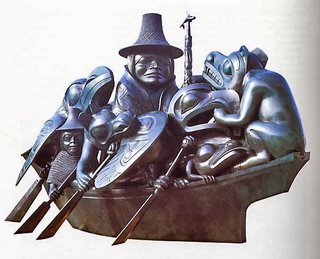
My new Epson scanner, the V700 has a brand new feature I was unaware of. I tried to scan a $20 to show the Bill Reid's image of The Spirit Of Haida Gwaii but a flag went up that steered me to Counterfeit Not!
Rosemary and I watched Alison Denham dance in Taped Together with a clear plastic raincoat last night at Dances for a Small Stage. She was terrific. The very special icing on the cake was that she replaced, at the very last moment, the intended Nureyev for Patrick Pennefather's The Deconstruction of the Dancer. It would seem that Nureyev declined at the last moment. And if that was not all we saw a bit more than twice performances by the exciting duo of Crystal Pite and Cori Caulfield in Farther Out There and Even Further Out There. Dave Brubeck would have been entranced.
The above performances coincided with the publishing of VLM's February issue containing what follows:

AB fab
Last December I watched a performance of Wei Dance's Three Sixty Five at the
East Vancouver Cultural Centre with my 10-year-old granddaughter. It featured six dancers including Wen Wei Wang. But my granddaughter singled out dancer Alison Denham and shouted into my ear, "Look at those abs!"
When I asked Sunshine Coast-born Denham, 29, if her body was due to genes or excercise (I have not seen any other dancer with a similar body), she answered, "Genes mixed perhaps with some excercise."
Denham started dancing recreationally when she was 10. When she was 12 she met retired National Ballet of Canada ballerina Lois Smith, who at the time was living in the Sunshine Coast, and for Denham it all changed. "Through her I saw how serious dance could be and how one could have a life at it. From then on I had classes with Smith every day. By age 14, when Denham finished a Royal Winnipeg Ballet summer program she knew dance was going to be her life. She pursued it at Arts Umbrella and the Ballet BC Mentor Program. She has performances for Judith Marcuse, Paras Terezakis, Judith Garay, Alvin Erasga Tolentino, Serge Bennathan and many others under her belt. She is part of Wen Wei Dance and of Company Erasga.
Suspecting that diet might have something to do with her strong physical condition I asked Denham what she eats on a normal day. "For breakfast I might have a cup of Orange Pekoe tea and toast with almond butter. For lunch it could be sushi, rice with kale, chicken or some meat product. For dinner I would have pesto pasta, avocados and a glass of wine."
After the performance of Three Sixty Five I asked Wen Wei Wang what role Denham played in his company. His answer was short, "She is my mother." Denham explained, "I don't know Wen Wei's mother but I think that he gives me roles that are based on emotion as opposed to physicality. In some way I seem to represent all women for him."
Alison Denham will be performing in May 2008 with the new modern dance company Move: The Company directed by Josh Beamish.
© 2008 VLM/Alex Waterhouse-Hayward
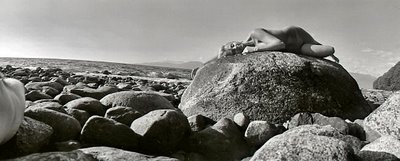
It always comes as a shock when I travel to Latin America. In Argentina, four years ago I kept seeing an ad for toothpaste that featured a gorgeous Argentine woman in a bikini. In Mérida last year I was perplexed by huge beer ads similar to the one advertising Howard Hughes's The Outlaw with Jane Russell. The ad read something like, "Two good reasons to drink.....beer."
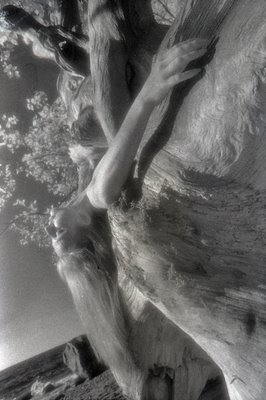
It comes as a shock because we now rarely take advantage of the female form to sell products in Canada. I could not explain our attitude to my Argentine relatives who kept suggesting we Canadians did not have a sense of fun or a passion for life. And when I remember my friend Juan Manuel Sanchez sketching one of our live nude models in my studio I think that the answer must lie somewhere in between.
But what is one to do when the phone rings as it did some years ago and the very English Deborah, an acquaintance from my days at Wreck Beach said, "I need you to record my body before nature settles in." What do do? I always comply without feeling too guilty of any kind of exploitation. After all I am not selling the photographs and no product is being advertised.
But I have a nagging suspicion that many years from now when some very different imaging technology will be reigning in society these b+w photographs will have their charm, a charm that they presently have for me.
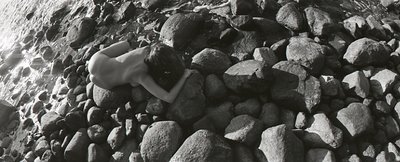
Sunday night I watched the 1998 Mexican film La Otra Conquista by director/writer Salvador Carrasco. It was in Spanish, the flowery Spanish of the 16th century and in Náhuatl the language spoken by the Mexican peoples of the State of Mexico. Náhuatl would be almost the same as the language of the ancient Aztecs.

I was forced to see the film almost as if it were a silent film in that I had to guess such obvious lines like, "The gods have abandoned us!" and some that were more complex that somehow I had perhaps grasped because of my Catholic upbringing and my 15 year stay in several parts of Mexico before I moved to Vancouver. When it became quite violent Rosemary abandoned me and I felt a profound sense of loss in not being able to share the magnificence of this film with anyone that I might know.
The film brought to mind two wonderful novels on the conquest of Mexico. The first by Spanish novelist and statesman Salvador de Madariaga, was published in 1942. In Spanish it is called El Corazón de Piedra Verde and in English it was published as The Heart of Jade. Unless you read (with a very Spanish point of view) Bernal Díaz del Castillo's (he was a soldier who fought with Hernán Cortés) Historia Verdadera de la Conquista de la Nueva España, your only readily available source of information on the conquest of Spain was Madariaga's Heart of Jade or the swashbuckling but extremely innacurate 1948 Hollywood film, Captains from Castile with Tyrone Power and Jean Peters. Cesar Romero played Cortés in an early prequel to his Joker.
In 1991 the situation was brought to some balance by Mexican writer Homero Aridjis who published Memorias del Nuevo Mundo which reads sort of like a conquest of Mexico with large dabs of magic realism. This superb novel (one of my favourites ever) has only been translated into French.
Few in North America will understand the difference between Columbus Day (even 50 years ago) with the Latin American Día de la Raza which translates to the Day of our Race, infering the mixing of the Spanish with Indian blood to form a new mestizo race. Few monuments to Christopher Columbus leave out the presence of the Indian. The one in Mexico City is extremely elaborate. And yet as my mother used to point out there was not one street or avenue in Mexico City named after the conquistador Hernán Cortés.
It was in the early 1950s that Mexican Bantamweight champion, Raúl "Ratón (mouse)" Macias began to talk about the colour of his skin being bronze. He advertised a Mexican imitation of Coke called Mexicola. You could sense that there was a beginning source of pride about being of native origins. At the time many women refused to shave their legs since Mexican peoples had little body hair. Men of humble origins tried to grow moustaches. In the late 60s Mexico City passed an ordinance prohibiting its police officers from growing moustaches. The hair on their legs or those minute moustaches proved that, no matter how dark their skin was they had glorious Spanish blood! By eliminating the moustache the police department wanted to eliminate racism within its ranks. I often wonder if Frida Kahlo's moustache was less protofeminist protest and more an assertion of her European roots.
In Argentina the racial barrier between the lighter skinned Argentines with the darker aboriginals can be clearly seen by the not endearing but deprecating term "cabecitas negras" or "little black haired heads" to denote those of local ethnic background. Argentine rugby and polo teams have always managed to keep the colour light skinned either through the money needed to participate or simply by first having to be members of exclusive sports clubs. One of the few avenues for economic advancement for those cabecitas negras are the football teams. Only when Maradona (an obvious cabecita) was famous all over the world did he become almost accepted in his country by the upper crusts. And when he went on his drug bust shenanigans the excuse that he was a common cabecita was raised.
Many of my family are wealthy and live in barrios cerrados or "walled neighbourhoods. I asked one of my relatives, recently, what he would do if some day (I would believe soon) people of the other classes decided to climb the walls. He went into a closet and pulled out an Itaka sawed off shotgun (generally used by police assault squads), a Luftwaffe issue Luger pistol and an Argentine version of the Colt .45 automatic. He then told me, "I would target practice."
Racial prejudice was just as rampant in Mexico when I married Rosemary 40 years ago. I told a Mexican friend (educated in Switzerland) that I was getting married. He inquired (in as indirect a manner as he could) what Rosemary was like. I mentioned that she was Canadian and blonde. My friend said with obvious relief, "Gracias a Dios, vas a mejorar la raza." It translates to, "Thank God you are going to better the race (by helping to make it lighter skinned)." When children are born the first question asked is usually answered, "Blanquito," or "the little one is sort of light skinned." On the other hand the ignorance on race goes both ways. My soon to be mother-in-law dispatched Rosemary's sister Ruth to Mexico to ascertain what caliber of civilization I had reached and if I ate with a fork and knife.
I did not learn to swim well until I came to Canada 37 years ago. I did not know how to play tennis either. In Mexico and in Argentina you would learn to swim and play such elitist sport like tennis in clubs. The entry fees were horrendous. That is why so many Argentine tennis champions are so light skinned. My mother would have never taken me to a municipal swimming pool in either Buenos Aires or Mexic City. How could I possibly mix with the lower classes!
My godmother in Buenos Aires cannot believe that Rebecca's father drives buses for Trans Link. ""¡No te creo, che!" (I don't believe you!) she says. Argentina pretty well has the two-tier health system our Canadian National conservative party and our BC Liberals want to establish here.
My friend Juan Manuel Sanchez, the Argentine painter who now lives in Buenos Aires recently fell. He is 76 so it is serious. I asked him what he did. He told me he paid $100 pesos (about $200 Canadian) to go to the hospital for treatment. "I didn't want to wait with the rest," he told me. He did not have to elaborate. I understood.

I wrote about "what if" novels here and of a particular one that has some bearing to today's blog here.
When Quetza the protagonist of the novel lands in his Mexica made ship near the Spanish town of Huelva (before Columbus was to sail in the opposite direction) relates (my translation of the text) in Federico Andhahazi's El Conquistador :
Upon landing Quetza ordered his men to wear their war clothing. They wore breastplates, wide rings around their arms, animal shaped masks and in hand they had their obsidian swords.
Quetza was euphoric to find out that the new lands contained men. He made a sign with his arm to the young man (a shepherd). He wanted to catch up to him to introduce himself. For an instant they stared at each other, transfixed. They were about the same age with the same expression of surprise on their face. Qutza stopped to notice the pale skin and the strange hair with light coloured curls. In spite of the young man's wooden staff he looked harmless. The Mexica captain began in his language, "I am Quetza. I come in my king's name, the emperor of Tenochtitlan. As of now you are his subject..." But before he could finish, the young man ran away as fast as he could until he disappeared at the end of the path. Quetza ordered his men to advance in the same direction to make him understand that he had no reason to fear them.
From the above you might suspect that the discovery of the old world by the new was not going to be any different from Columbus's, but you will have to wait for the English translation of this novel as I don't plan to spoil the ending.
The Jeweler, The Soprano, The Baritone & The Jamaican Olympic Bob Sled Team
Sunday, February 03, 2008

There we were (yesterday afternoon) inside Christ Church Cathedral. Upon entering it Rebecca had said, "While this may be Vancouver's nicest church I think the old churches in Mexico are nicer." We sat down to listen to a performance of Bruce Ruddell's Oratorio, The Spirit of Haida Gwaii with text by Bill Reid. Rebecca understood it had all to do with the story behind Reid's sculpture at Vancouver International Airport and the image on our $20 bills. I was not going to make it more complex to point out that the first Spirit of Haida Gwaii was esconced in Arthur Erickson's Canadian Embassy in Washington, DC.
Out of the blue, she asked me, "Who is your favourite bob sled team to win the 2010 Winter Olympic Games in Vancouver? Mine is the Jamaican team." Then she added, "The Swiss team is number 2." At this point the handsome gentleman sitting next to Rebecca interjected, "The Swiss invented the game. I am Swiss." Rebecca looked in his direction and asked him, "Do you speak French? Do you speak German? Do you speak Italian?" The man answered positively to the first two and then said, "I don't speak Italian, I speak Romantsch."

The whole thing had begun when we sat down and I noticed Toni Cavelti and his wife. "I want you to meet "the jeweler," I had told Rebecca."
We had a specially nice time as we were sitting behind timpani player Carol Pelkner. Ruddell's Oratorio had many juicy timpani parts and we delighted in Pelkner's performance. The music had some overtones of Benjamin Britten's Young Person's Guide to the Orchestra and Karl Jenkins Palladio. This meant that it was accessible not only to my ears but to Rebecca. She has seen baroque singers before so the excellent performance by bariton Clarence Logan and soprano Melody Mercredi was something she could enjoy while taking in Mercredi's beautiful red silk, bias-cut dress (by Dorothy Grant) with a drop shoulder and a slit to show off Mercredi's legs. When the performance was over we went into the back to talk to Logan and Mercredi. When I asked what was next, Mercredi surprised us by telling us she was going to be performing in the Vancouver Opera's performance of Beethoven's Fidelio startint on March 28. Immediately Rebecca asked, "When was Beethoven born?" As we left we ran into violinist Cam Wilson who told us, "I love playing here. The acoustics are wonderful."What are acoustics," Rebecca asked and we left the church as I explained to her the concept.
I called up Bruce Stewart this morning to ask him why Rebecca thinks so much about that Jamaican bob sled team. Rebecca's father told me they have a copy of the 1993 Cool Runnings with John Candy which is about the Jamaican bob sled team's exploits leading to the Calgary Winter Olympics. He further explained the other Jamaican connection of the film's title. It seems singer Bob Marley had that expression in the lyrics to his Blackman Redemption.

My new Epson scanner, the V700 has a brand new feature I was unaware of. I tried to scan a $20 to show the Bill Reid's image of The Spirit Of Haida Gwaii but a flag went up that steered me to Counterfeit Not!
Alison Denham - Taped Together - Almond Butter Toast
Saturday, February 02, 2008
Rosemary and I watched Alison Denham dance in Taped Together with a clear plastic raincoat last night at Dances for a Small Stage. She was terrific. The very special icing on the cake was that she replaced, at the very last moment, the intended Nureyev for Patrick Pennefather's The Deconstruction of the Dancer. It would seem that Nureyev declined at the last moment. And if that was not all we saw a bit more than twice performances by the exciting duo of Crystal Pite and Cori Caulfield in Farther Out There and Even Further Out There. Dave Brubeck would have been entranced.
The above performances coincided with the publishing of VLM's February issue containing what follows:

AB fab
Last December I watched a performance of Wei Dance's Three Sixty Five at the
East Vancouver Cultural Centre with my 10-year-old granddaughter. It featured six dancers including Wen Wei Wang. But my granddaughter singled out dancer Alison Denham and shouted into my ear, "Look at those abs!"
When I asked Sunshine Coast-born Denham, 29, if her body was due to genes or excercise (I have not seen any other dancer with a similar body), she answered, "Genes mixed perhaps with some excercise."
Denham started dancing recreationally when she was 10. When she was 12 she met retired National Ballet of Canada ballerina Lois Smith, who at the time was living in the Sunshine Coast, and for Denham it all changed. "Through her I saw how serious dance could be and how one could have a life at it. From then on I had classes with Smith every day. By age 14, when Denham finished a Royal Winnipeg Ballet summer program she knew dance was going to be her life. She pursued it at Arts Umbrella and the Ballet BC Mentor Program. She has performances for Judith Marcuse, Paras Terezakis, Judith Garay, Alvin Erasga Tolentino, Serge Bennathan and many others under her belt. She is part of Wen Wei Dance and of Company Erasga.
Suspecting that diet might have something to do with her strong physical condition I asked Denham what she eats on a normal day. "For breakfast I might have a cup of Orange Pekoe tea and toast with almond butter. For lunch it could be sushi, rice with kale, chicken or some meat product. For dinner I would have pesto pasta, avocados and a glass of wine."
After the performance of Three Sixty Five I asked Wen Wei Wang what role Denham played in his company. His answer was short, "She is my mother." Denham explained, "I don't know Wen Wei's mother but I think that he gives me roles that are based on emotion as opposed to physicality. In some way I seem to represent all women for him."
Alison Denham will be performing in May 2008 with the new modern dance company Move: The Company directed by Josh Beamish.
© 2008 VLM/Alex Waterhouse-Hayward
Deborah Does Not Endorse Gleem With GL-70
Friday, February 01, 2008

It always comes as a shock when I travel to Latin America. In Argentina, four years ago I kept seeing an ad for toothpaste that featured a gorgeous Argentine woman in a bikini. In Mérida last year I was perplexed by huge beer ads similar to the one advertising Howard Hughes's The Outlaw with Jane Russell. The ad read something like, "Two good reasons to drink.....beer."

It comes as a shock because we now rarely take advantage of the female form to sell products in Canada. I could not explain our attitude to my Argentine relatives who kept suggesting we Canadians did not have a sense of fun or a passion for life. And when I remember my friend Juan Manuel Sanchez sketching one of our live nude models in my studio I think that the answer must lie somewhere in between.
But what is one to do when the phone rings as it did some years ago and the very English Deborah, an acquaintance from my days at Wreck Beach said, "I need you to record my body before nature settles in." What do do? I always comply without feeling too guilty of any kind of exploitation. After all I am not selling the photographs and no product is being advertised.
But I have a nagging suspicion that many years from now when some very different imaging technology will be reigning in society these b+w photographs will have their charm, a charm that they presently have for me.







